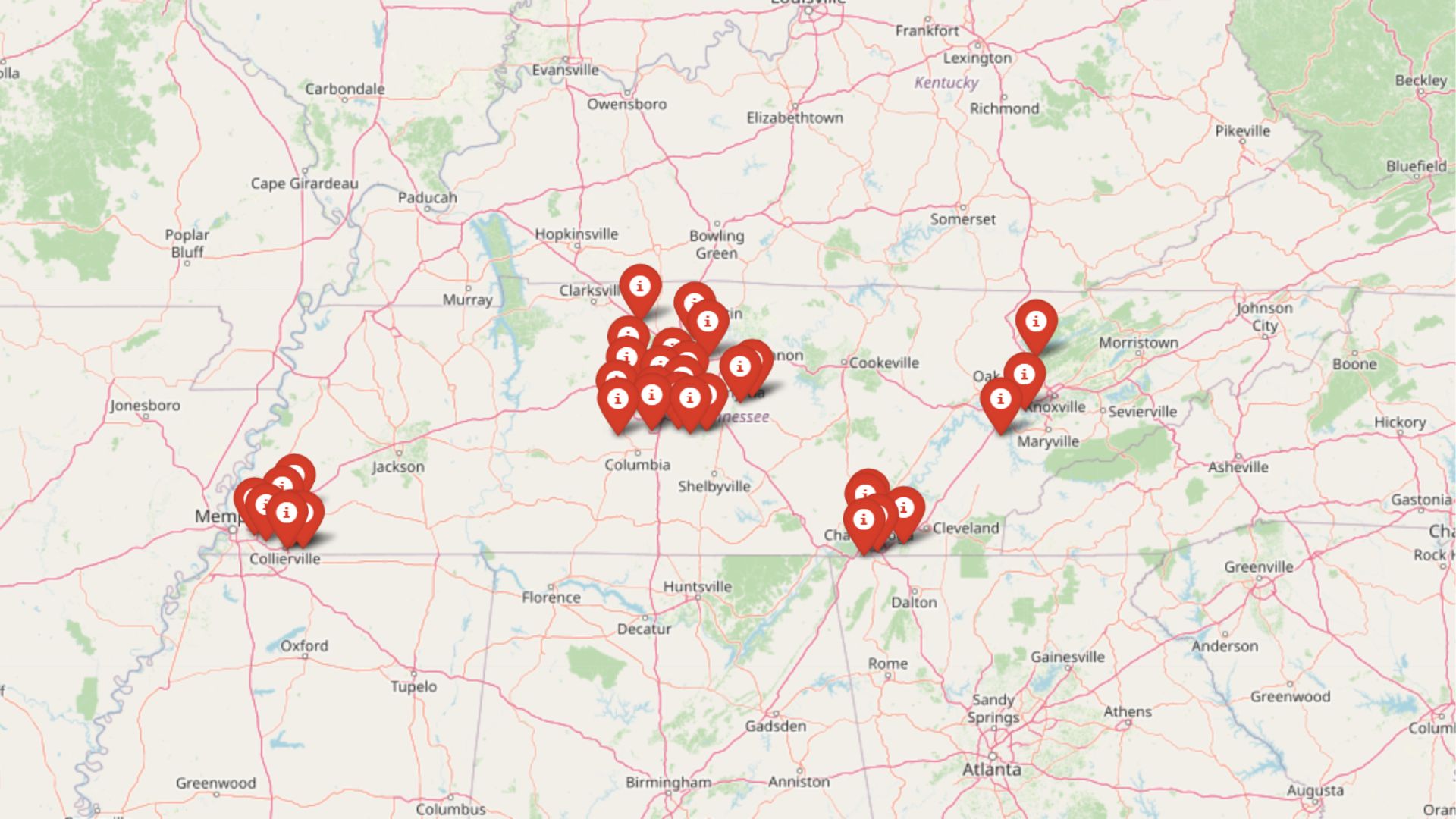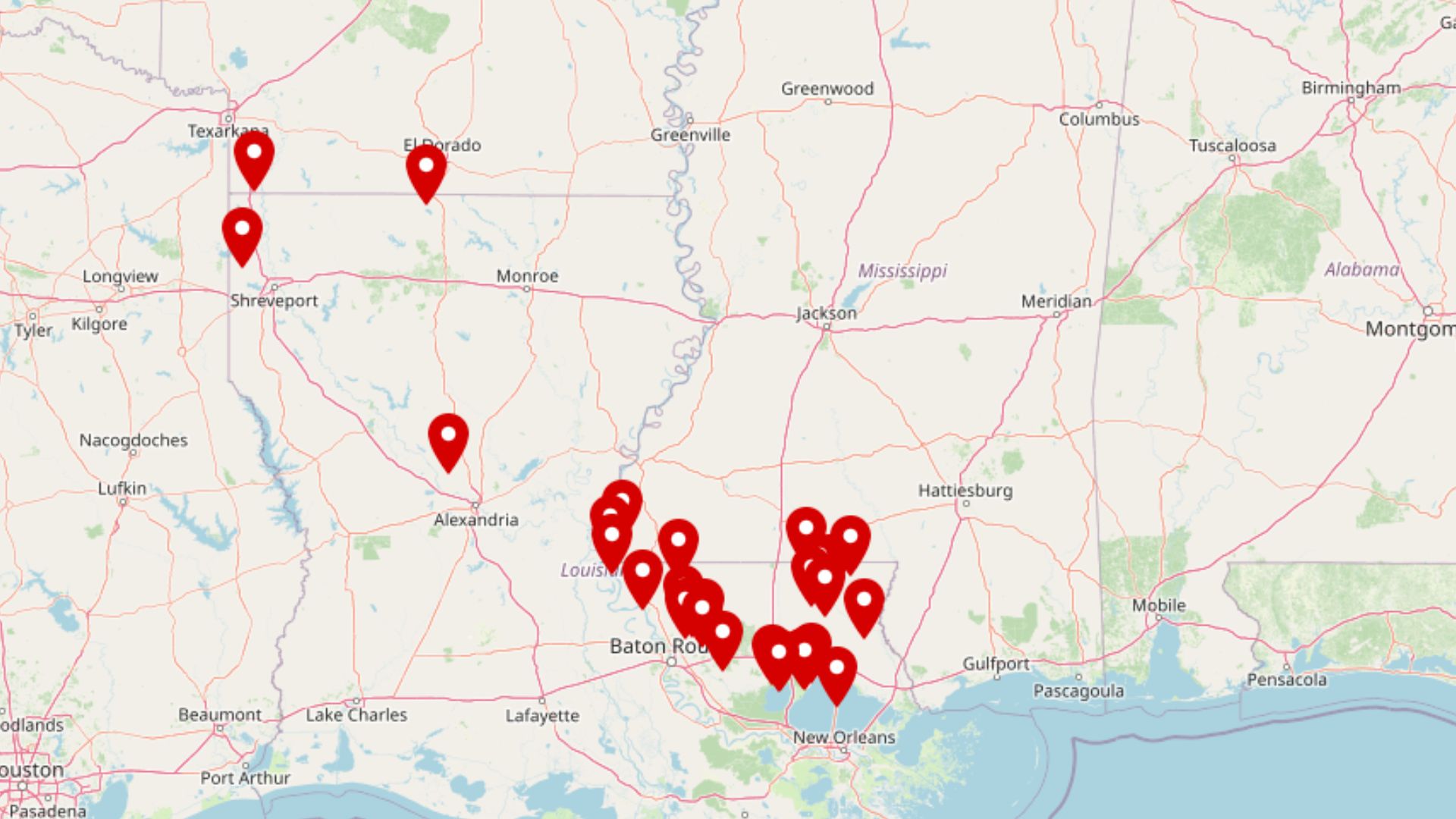
Using the latest Zillow Home Value Index data from July 2025, we’ve ranked the 30 most expensive towns in Colorado based on current home prices. These communities represent the pinnacle of mountain luxury, ski resort exclusivity, and upscale suburban living. From world-famous destinations like Aspen and Vail to exclusive enclaves near Denver, each town tells a story of remarkable growth and enduring appeal.
Home prices in these areas reflect more than just location—they capture lifestyle, investment potential, and access to Colorado’s most coveted amenities. Whether you’re exploring investment opportunities, considering a move, or simply curious about where Colorado’s housing market reaches its peak, this analysis reveals the forces driving these extraordinary values.
30. Castle Pines – 118% Home Price Increase Since 2010

- 2010: $415,092
- 2011: $407,606
- 2012: $420,984
- 2013: $463,163
- 2014: $502,625
- 2015: $538,725
- 2016: $563,711
- 2017: $591,381
- 2018: $621,182
- 2019: $643,559
- 2020: $666,194
- 2021: $807,591
- 2022: $955,859
- 2023: $905,549
- 2024: $923,455
- 2025: $904,497
Castle Pines has maintained steady growth over the past 15 years, more than doubling from its 2010 baseline. The community experienced its strongest surge during the pandemic years of 2021-2022, reaching nearly $1 million before settling back to current levels. By 2025, median home prices reached $904,497, reflecting consistent demand for this prestigious Denver-area community.
Why Castle Pines?
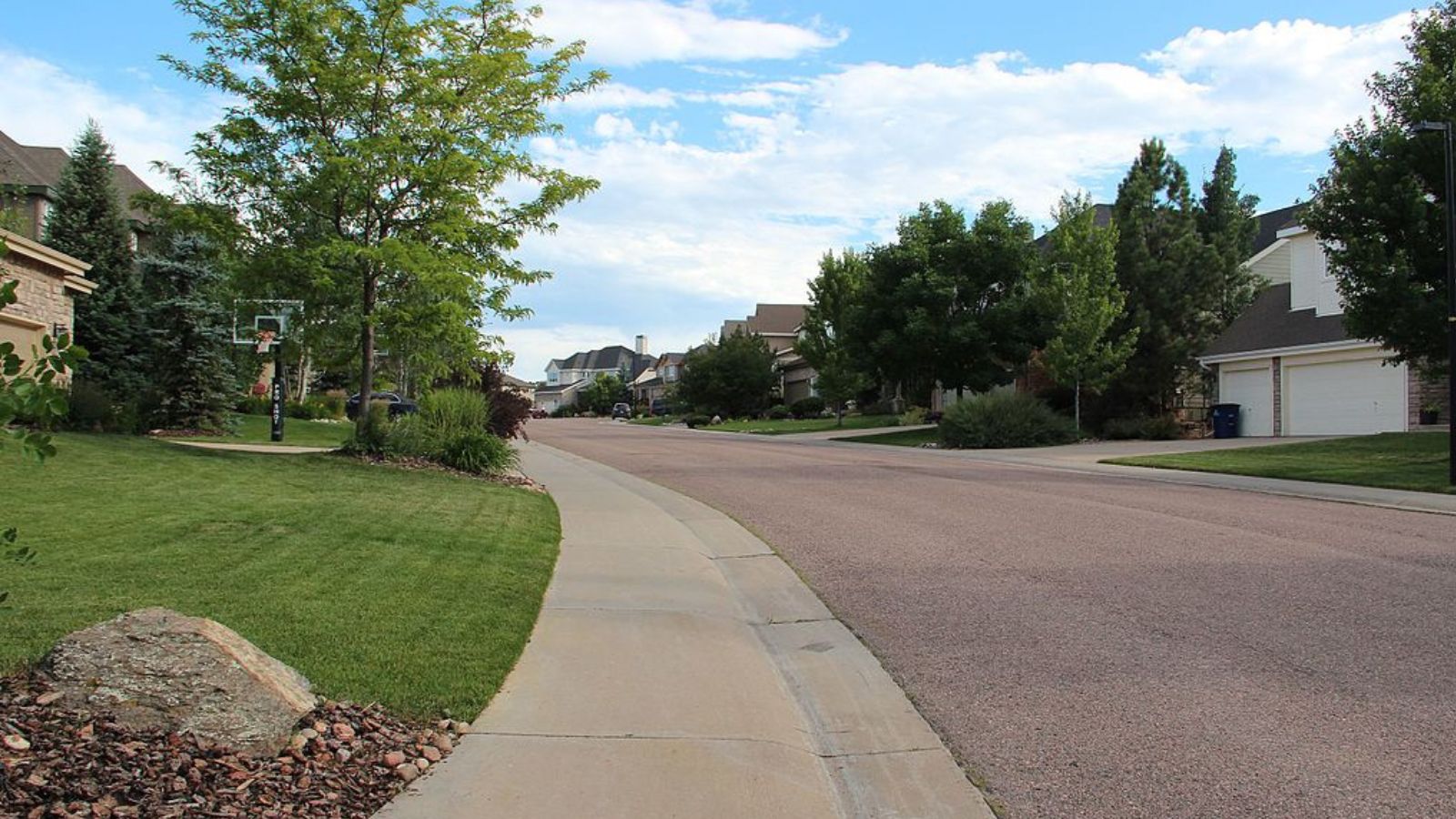
Why are people willing to pay so much to live here? What’s special about it?
Castle Pines attracts families seeking a perfect blend of luxury living and outdoor recreation just south of Denver. The community centers around the prestigious Castle Pines Golf Club, offering championship golf and country club amenities. Residents enjoy large custom homes on spacious lots, many with mountain views and direct golf course access.
The area provides easy access to Denver’s job market while maintaining a secluded, resort-like atmosphere. Top-rated Douglas County schools, low crime rates, and extensive hiking trails add to the appeal. Many homes feature high-end finishes and architectural details that justify the premium pricing.
How Castle Pines Rose to Prominence
Castle Pines began as a master-planned golf community in the 1980s, developed around Jack Nicklaus’s championship golf course design. The area was strategically positioned to capture Denver’s southern suburban expansion, offering larger lots and custom homes than typical suburban developments. Early marketing focused on attracting executives and professionals who wanted luxury amenities without sacrificing commuter convenience.
The community’s reputation grew through the 1990s and 2000s as it hosted major golf tournaments and attracted high-profile residents. Strict architectural guidelines and homeowners association standards maintained property values and ensured consistent quality throughout the development. The Castle Pines Golf Club became a symbol of Colorado luxury, drawing members from across the Denver metropolitan area.
3 Interesting Tidbits
1. Golf Legacy – The Castle Pines Golf Club hosted The International tournament on the PGA Tour from 1986 to 2006, featuring a unique modified Stableford scoring system.
2. Celebrity Connection – The community has attracted numerous professional athletes, business executives, and celebrities who value the privacy and luxury amenities.
3. Conservation Focus – Despite intensive development, Castle Pines maintains over 3,000 acres of open space and natural areas, preserving the area’s rolling terrain and native ecosystems.
29. Clark – 199% Home Price Increase Since 2010

- 2010: $303,010
- 2011: $296,438
- 2012: $307,250
- 2013: $337,406
- 2014: $351,399
- 2015: $361,252
- 2016: $389,251
- 2017: $421,920
- 2018: $453,842
- 2019: $500,353
- 2020: $514,092
- 2021: $686,320
- 2022: $827,399
- 2023: $844,444
- 2024: $860,964
- 2025: $904,979
Clark shows remarkable appreciation with prices nearly tripling since 2010, representing a 199% increase. The community experienced explosive growth starting in 2019, with values jumping from around $500,000 to over $900,000 in just six years. Current median prices at $904,979 reflect strong demand for this mountain community’s unique lifestyle offerings.
Why Clark?
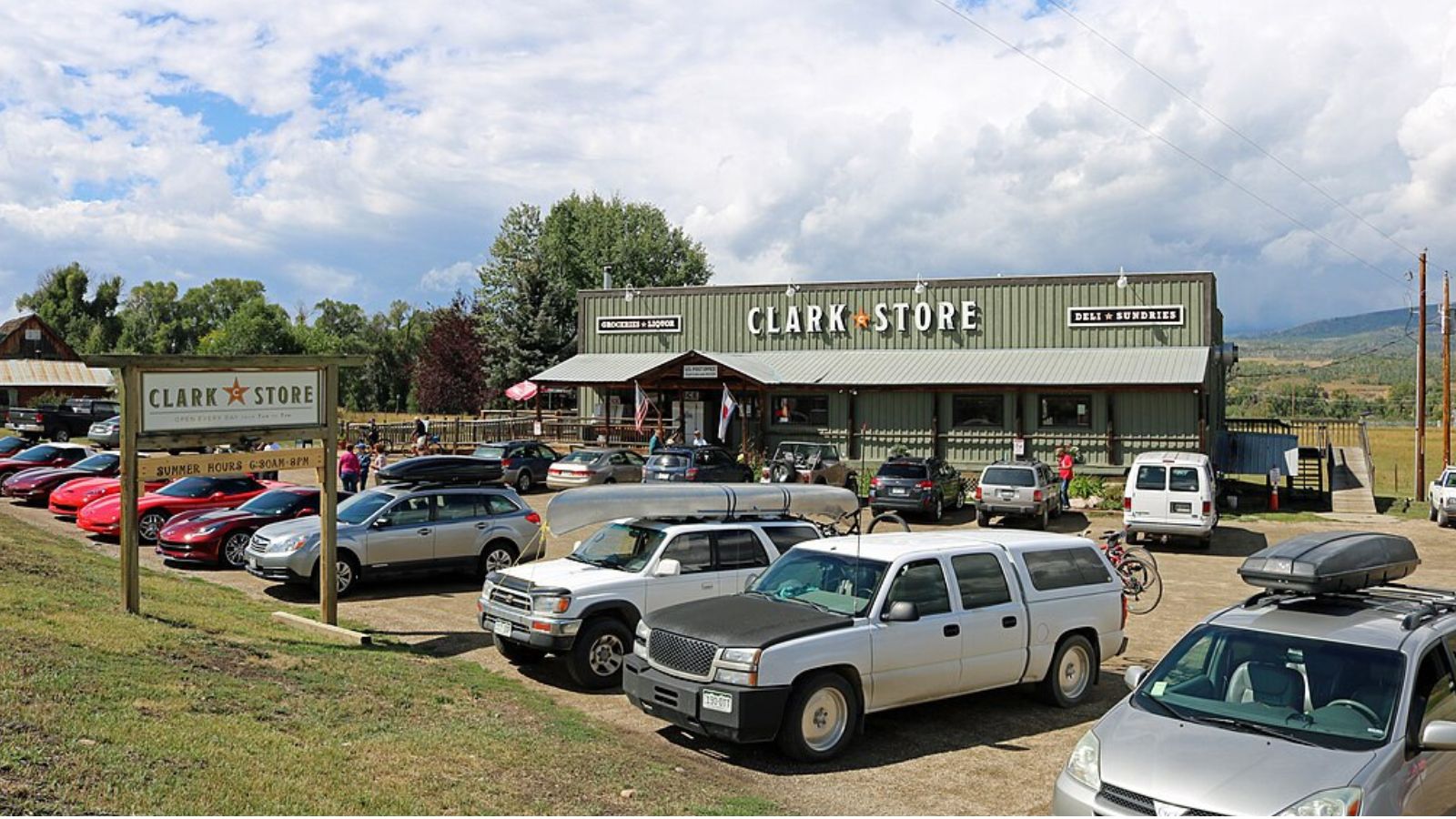
Why are people willing to pay so much to live here? What’s special about it?
Clark offers an authentic mountain living experience in the Yampa Valley, just minutes from Steamboat Springs. Residents enjoy vast mountain vistas, abundant wildlife, and immediate access to world-class skiing and outdoor recreation. The community maintains a rural character with larger properties and custom homes that blend into the natural landscape.
Many properties feature acreage suitable for horses, private wells, and stunning views of the Continental Divide. The area attracts outdoor enthusiasts who want year-round recreation including skiing, hiking, fishing, and hunting. Clark’s proximity to Steamboat Springs provides access to resort amenities while maintaining a more affordable and private alternative to in-town living.
How Clark Rose to Prominence
Clark began as a small agricultural community in the early 1900s, serving ranchers and farmers in the Yampa Valley. The area remained largely rural until Steamboat Springs began developing as a major ski destination in the 1960s and 1970s. As Steamboat’s popularity grew, Clark became attractive to those seeking larger properties and more privacy while staying connected to resort amenities.
The 2000s brought significant development pressure as Denver-area residents discovered Clark’s combination of mountain lifestyle and relative affordability. Many properties were subdivided into smaller acreages, allowing more buyers to access the area while maintaining its rural character. The community has carefully balanced growth with preservation, maintaining its agricultural heritage while accommodating new luxury homes.
3 Interesting Tidbits
1. Agricultural Roots – Clark was originally founded as a farming community named after William Clark, an early homesteader who established one of the area’s first successful ranches.
2. Wildlife Haven – The area is renowned for its wildlife populations, including elk, deer, moose, and black bears, with many properties offering prime wildlife viewing opportunities.
3. Geothermal Springs – The region features several natural hot springs, including some on private properties, taking advantage of the area’s geothermal activity.
28. Evergreen – 135% Home Price Increase Since 2010

- 2010: $390,298
- 2011: $373,722
- 2012: $367,208
- 2013: $392,782
- 2014: $421,050
- 2015: $461,191
- 2016: $502,675
- 2017: $540,010
- 2018: $586,481
- 2019: $630,504
- 2020: $666,094
- 2021: $840,039
- 2022: $958,926
- 2023: $898,675
- 2024: $927,502
- 2025: $915,582
Evergreen has seen consistent appreciation with a 135% increase since 2010, reaching $915,582 in 2025. The mountain community experienced steady growth through most periods, with a notable acceleration during 2021-2022 when prices peaked near $960,000. The area has maintained strong values despite some recent moderation, reflecting its appeal as a mountain retreat close to Denver.
Why Evergreen?
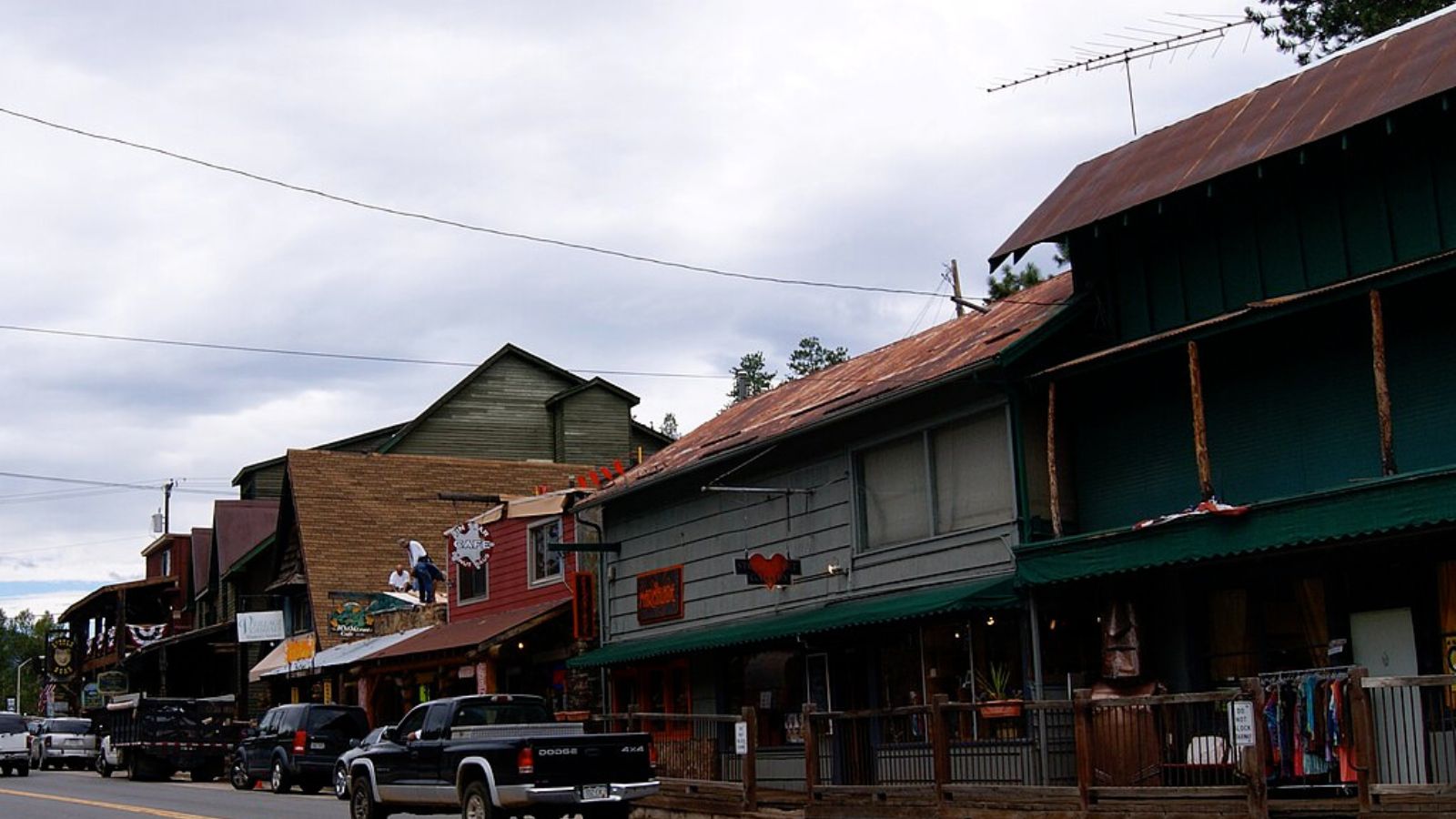
Why are people willing to pay so much to live here? What’s special about it?
Evergreen provides the perfect escape from Denver’s urban environment while maintaining reasonable commuting distance to the city. Nestled in the foothills at 7,200 feet elevation, the town offers stunning mountain scenery, pristine Evergreen Lake, and countless hiking trails. Residents enjoy a small-town atmosphere with local shops, restaurants, and community events.
The area attracts families and professionals who want mountain living without the extreme isolation of higher-elevation communities. Many homes feature custom architecture designed to blend with the forested environment, offering privacy and natural settings. Evergreen’s year-round accessibility and proximity to ski resorts make it appealing to outdoor enthusiasts and commuters alike.
How Evergreen Rose to Prominence
Evergreen began as a summer resort destination in the late 1800s, when Denver residents would escape to the cooler mountain air via the Denver, South Park & Pacific Railroad. The community grew around Evergreen Lake, which was created in 1927 as a focal point for recreation and development. Early cabins and summer homes gradually evolved into year-round residences as road access improved.
The 1970s and 1980s brought significant residential development as Denver’s suburban growth pushed westward into the foothills. Evergreen’s combination of mountain character and relative accessibility made it attractive to professionals seeking an alternative to traditional suburban living. The community has maintained its mountain town identity while accommodating growth, preserving open space and historic structures.
3 Interesting Tidbits
1. Lake Legacy – Evergreen Lake was created by damming Bear Creek and remains the heart of the community, offering ice skating in winter and fishing year-round.
2. Historic Preservation – The Hiwan Heritage Park preserves the area’s history, including the 1890s Hiwan Homestead Museum and artifacts from early mountain settlers.
3. Elevation Living – At 7,200 feet above sea level, Evergreen offers cooler summers and snowy winters, with some areas receiving over 100 inches of snow annually.
27. Ophir – 58% Home Price Increase Since 2019

- 2010: N/A
- 2011: N/A
- 2012: N/A
- 2013: N/A
- 2014: N/A
- 2015: N/A
- 2016: N/A
- 2017: N/A
- 2018: N/A
- 2019: $591,790
- 2020: $656,589
- 2021: $842,299
- 2022: $1,113,396
- 2023: $986,110
- 2024: $962,079
- 2025: $934,770
Ophir shows strong appreciation with a 58% increase since data became available in 2019. Starting at $591,790, prices surged dramatically to over $1.1 million in 2022 before moderating to current levels around $934,770. This remote mountain community has attracted significant attention from buyers seeking exclusive mountain properties despite its challenging access and limited infrastructure.
Why Ophir?

Jeffrey Beall, CC BY 4.0, via Wikimedia Commons
Why are people willing to pay so much to live here? What’s special about it?
Ophir offers unparalleled mountain solitude and natural beauty in a historic mining town setting between Telluride and Silverton. The community sits at over 9,700 feet elevation, providing dramatic alpine scenery and immediate access to wilderness areas. Properties often feature large acreages with mountain views, mining claims, and unique historic structures.
Buyers are drawn to Ophir’s authenticity and remoteness, offering an escape from modern life while maintaining some access to Telluride’s amenities. The area appeals to those seeking adventure, privacy, and a connection to Colorado’s mining heritage. Many properties serve as mountain retreats or investment holdings for those who value raw mountain beauty over convenience.
How Ophir Rose to Prominence
Ophir was established in the 1870s as a silver mining camp, named after the biblical land of gold and precious stones. The town thrived during the Colorado mining boom, supporting several hundred residents and multiple mining operations in the surrounding mountains. The arrival of the Rio Grande Southern Railroad in the 1890s brought easier access and economic growth to the remote valley.
After mining declined in the early 1900s, Ophir became a near ghost town with only a few year-round residents maintaining the community. The modern revival began in the 1970s and 1980s as Telluride’s ski resort development created demand for nearby properties. Ophir’s historic character and spectacular setting attracted buyers seeking authentic mountain properties, leading to restoration of historic buildings and construction of new mountain homes.
3 Interesting Tidbits
1. Mining Heritage – Ophir’s name comes from the biblical region known for gold and precious stones, reflecting the optimism of 1870s silver prospectors.
2. Extreme Elevation – At 9,695 feet above sea level, Ophir is one of Colorado’s highest communities, requiring residents to adapt to thin air and extreme weather conditions.
3. Historic Preservation – Several original 1880s buildings remain standing, including the old schoolhouse and mining structures that give the town its authentic frontier character.
26. Larkspur – 124% Home Price Increase Since 2010

- 2010: $424,630
- 2011: $404,308
- 2012: $408,912
- 2013: $442,165
- 2014: $471,656
- 2015: $504,447
- 2016: $531,817
- 2017: $575,946
- 2018: $617,495
- 2019: $643,163
- 2020: $672,601
- 2021: $834,292
- 2022: $976,213
- 2023: $921,473
- 2024: $952,169
- 2025: $952,002
Larkspur has experienced strong growth with a 124% increase since 2010, more than doubling in value to reach $952,002 in 2025. The community saw steady appreciation through the 2010s, followed by acceleration during the pandemic period when prices jumped from around $670,000 to nearly $1 million. Current values reflect the area’s appeal as an upscale suburban alternative south of Denver.
Why Larkspur?
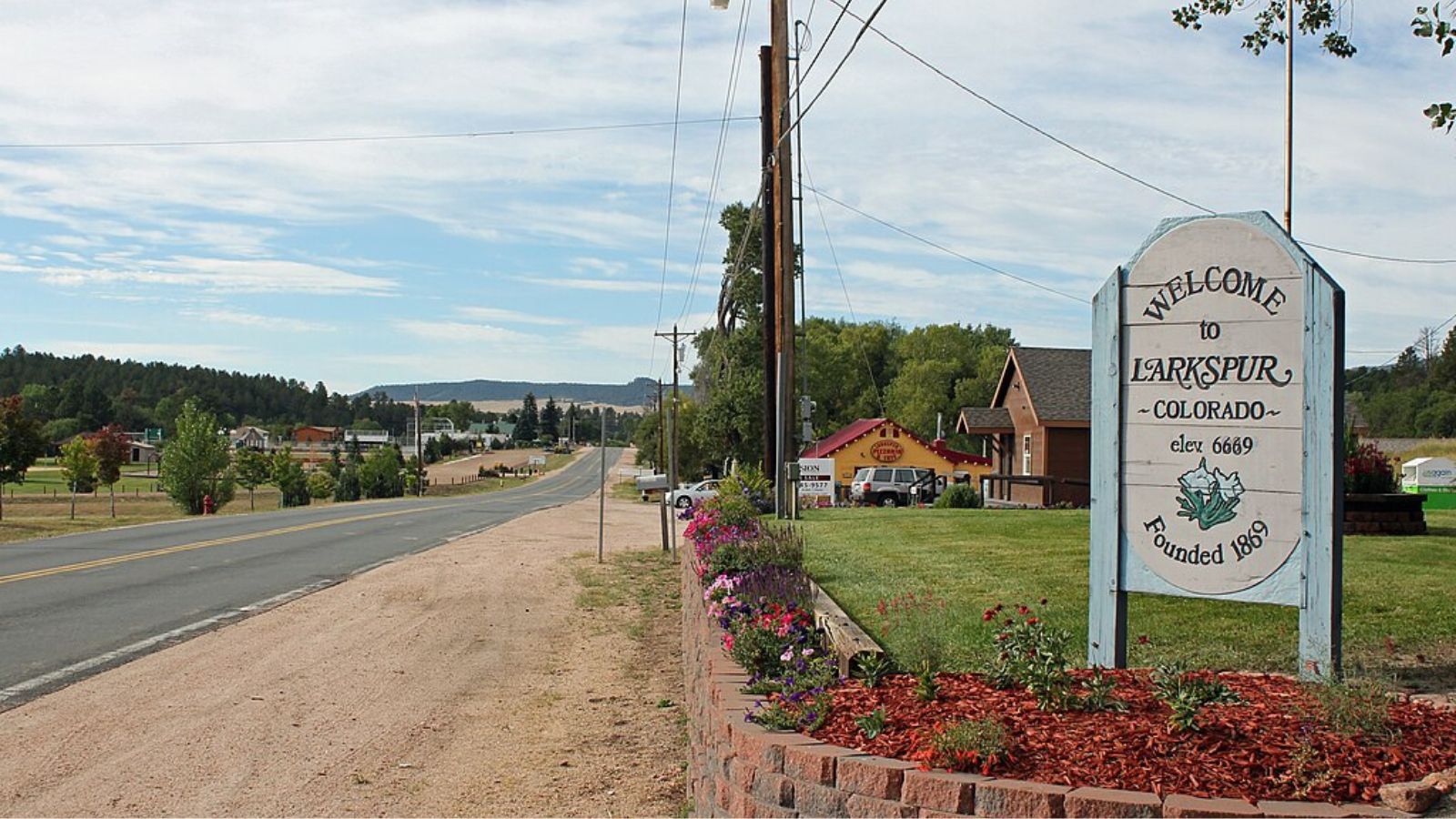
Why are people willing to pay so much to live here? What’s special about it?
Larkspur attracts buyers seeking large properties and custom homes in a semi-rural setting within commuting distance of Denver. The community offers expansive lots, often several acres, allowing for horses, privacy, and custom-designed homes. Residents enjoy mountain views, open space, and a more relaxed pace while maintaining access to urban amenities.
The area appeals to families who want space for children and pets, professionals seeking a country lifestyle, and equestrian enthusiasts. Many properties feature outbuildings, barns, and pastures suitable for livestock. Larkspur’s location provides easy access to outdoor recreation while avoiding the isolation of truly remote mountain communities.
How Larkspur Rose to Prominence
Larkspur originated as a railroad stop on the Denver and Rio Grande Railroad in the 1870s, serving as a shipping point for local ranchers and farmers. The community remained primarily agricultural through the mid-20th century, with large ranches and farms dominating the landscape. As Denver’s suburban growth accelerated in the 1980s and 1990s, Larkspur became attractive to those seeking more space and rural character.
Development pressure increased significantly in the 2000s as land values rose and large properties were subdivided into smaller acreages. The community has worked to balance growth with preservation of its rural character, implementing zoning that requires larger minimum lot sizes. This approach has helped maintain property values while preserving the area’s appeal to buyers seeking space and privacy.
3 Interesting Tidbits
1. Railroad Heritage – The town was named after the abundant larkspur wildflowers that bloomed throughout the area each spring, creating purple carpets across the meadows.
2. Equestrian Culture – Larkspur maintains a strong horse culture with numerous boarding facilities, riding trails, and equestrian events throughout the year.
3. Open Space Preservation – Douglas County has preserved thousands of acres of open space around Larkspur, maintaining the area’s rural character and wildlife habitat.
25. Todd Creek – 133% Home Price Increase Since 2010

- 2010: $409,240
- 2011: $384,730
- 2012: $384,858
- 2013: $418,478
- 2014: $453,142
- 2015: $500,443
- 2016: $535,521
- 2017: $567,290
- 2018: $622,229
- 2019: $652,582
- 2020: $693,027
- 2021: $830,041
- 2022: $958,306
- 2023: $916,490
- 2024: $946,644
- 2025: $954,410
Todd Creek has shown impressive growth with a 133% increase since 2010, reaching $954,410 in 2025. The community experienced steady appreciation through the 2010s before accelerating dramatically during 2021-2022 when prices nearly doubled. Current values reflect strong demand for this northern Colorado community’s blend of suburban convenience and open space living.
Why Todd Creek?
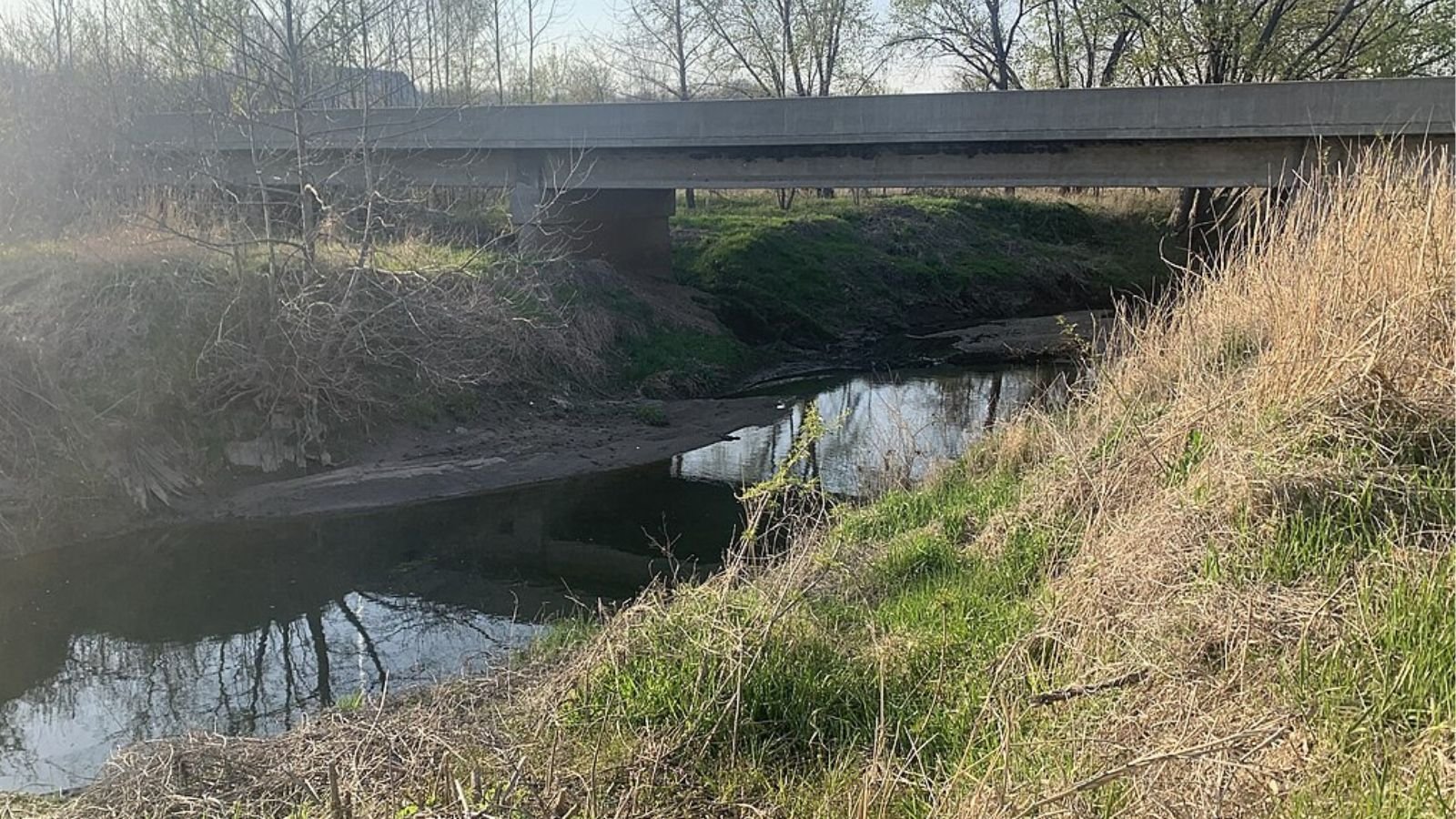
Why are people willing to pay so much to live here? What’s special about it?
Todd Creek offers a unique combination of suburban amenities and rural lifestyle north of the Denver metropolitan area. The community features larger lots, custom homes, and preserved open space while providing access to top-rated schools and modern conveniences. Residents enjoy mountain views, prairie landscapes, and proximity to recreational opportunities.
The area attracts families seeking space and privacy without sacrificing suburban amenities like shopping, dining, and schools. Many properties feature custom architecture, landscaped grounds, and room for outdoor activities. Todd Creek’s location provides reasonable commuting access to Denver, Boulder, and the northern suburbs while maintaining a more relaxed, spacious environment.
How Todd Creek Rose to Prominence
Todd Creek began as agricultural land in the late 1800s, with farming and ranching dominating the area through most of the 20th century. The community’s transformation began in the 1990s as Denver’s northern suburban growth reached the area. Developers recognized the appeal of the rolling terrain, mountain views, and larger lot sizes possible in this location.
Master-planned developments in the 2000s established Todd Creek as an upscale suburban alternative, featuring custom homes on larger lots with preserved open space. The community attracted families seeking more space than traditional suburbs offered while maintaining access to quality schools and amenities. Careful planning has preserved much of the area’s natural character while accommodating substantial residential growth.
3 Interesting Tidbits
1. Creek Namesake – The community takes its name from Todd Creek, which flows through the area and provides natural drainage and wildlife habitat for the surrounding developments.
2. Open Space Network – Over 30% of the Todd Creek development area is preserved as open space, trails, and natural areas, maintaining the region’s prairie ecosystem.
3. Master Planning – The community was developed as one of Colorado’s first large-scale master-planned developments, serving as a model for balancing growth with environmental preservation.
24. Boulder – 132% Home Price Increase Since 2010

- 2010: $413,940
- 2011: $407,951
- 2012: $419,441
- 2013: $456,704
- 2014: $495,283
- 2015: $553,117
- 2016: $648,942
- 2017: $700,725
- 2018: $724,230
- 2019: $747,342
- 2020: $769,644
- 2021: $903,563
- 2022: $1,065,581
- 2023: $987,481
- 2024: $992,373
- 2025: $961,337
Boulder has achieved a 132% increase since 2010, with current median prices at $961,337. The university city experienced steady growth through the 2010s, followed by sharp acceleration during the pandemic years when prices exceeded $1 million. Current values reflect Boulder’s unique position as a tech hub, university town, and outdoor recreation center at the base of the Rocky Mountains.
Why Boulder?
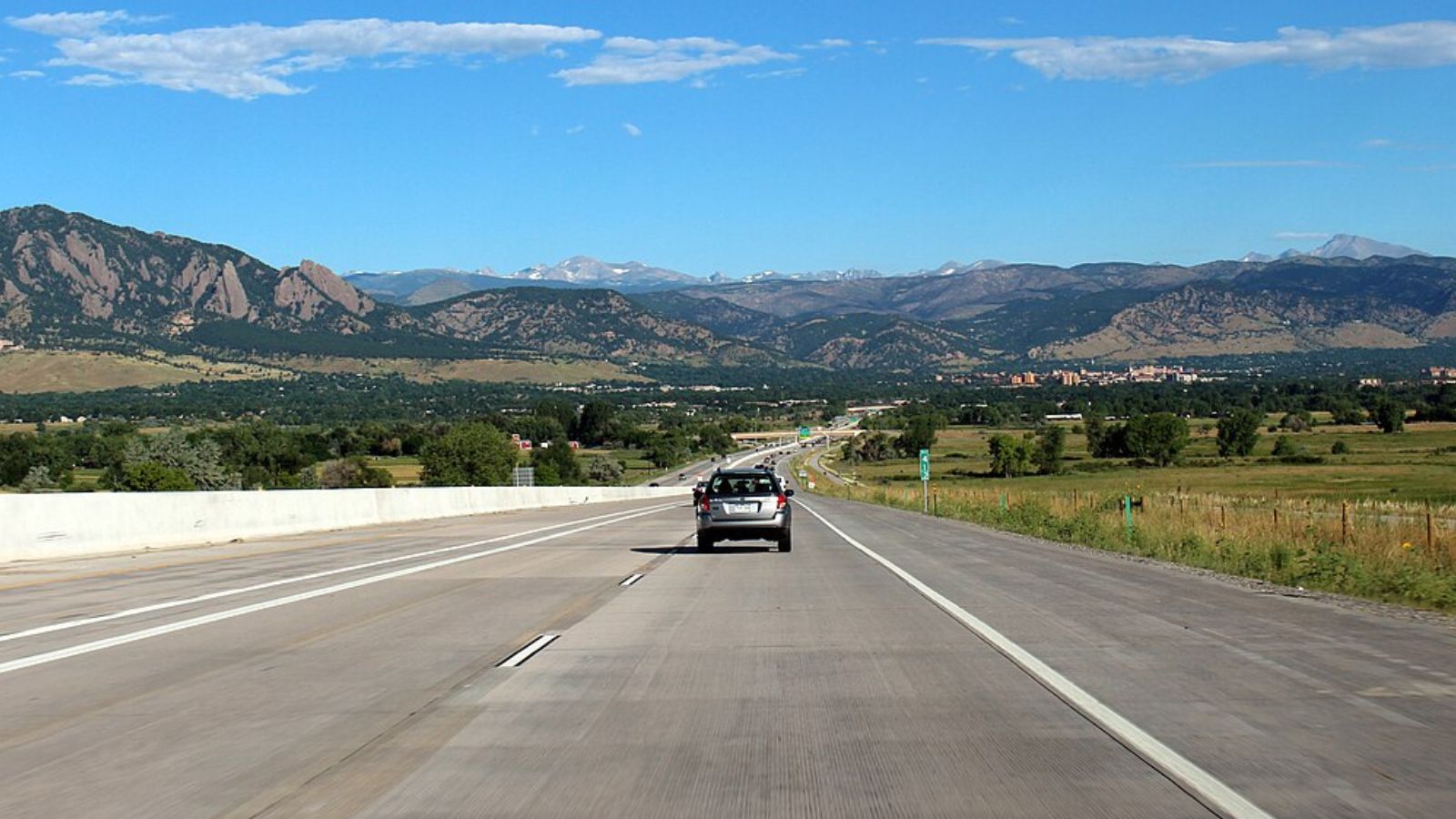
Why are people willing to pay so much to live here? What’s special about it?
Boulder combines world-class outdoor recreation with a thriving technology and startup ecosystem, creating exceptional demand for housing. The city sits dramatically against the Flatirons mountains, offering immediate access to hiking, climbing, and cycling while supporting major employers and the University of Colorado. Residents enjoy a highly educated community, cultural amenities, and environmental consciousness.
The area attracts tech professionals, university faculty, outdoor enthusiasts, and entrepreneurs who value Boulder’s unique lifestyle blend. Strict growth controls and open space preservation have limited housing supply while demand remains high. Many buyers are drawn to the combination of intellectual stimulation, outdoor access, and progressive community values that define Boulder’s character.
How Boulder Rose to Prominence
Boulder was founded in 1858 by gold prospectors but evolved into a permanent settlement when the University of Colorado was established in 1876. The university became the foundation for the city’s intellectual and cultural development, attracting faculty, students, and research institutions. Boulder’s location at the base of the mountains made it a natural center for outdoor recreation and tourism.
The transformation into a high-tech center began in the 1960s and accelerated through the 1980s and 1990s as companies like IBM, Ball Aerospace, and later Google established significant operations. Boulder’s combination of university research, outdoor lifestyle, and progressive politics created an attractive environment for entrepreneurs and tech workers. Strict growth controls implemented in the 1970s limited housing supply, contributing to consistently rising property values.
3 Interesting Tidbits
1. Open Space Pioneer – Boulder was one of the first cities in the nation to tax itself to purchase open space, preserving over 45,000 acres around the community since 1967.
2. Tech Innovation – The city has one of the highest concentrations of software engineers per capita in the United States, contributing to its nickname as the “Silicon Valley of the Rockies.”
3. Outdoor Culture – Boulder has more outdoor gear companies per capita than any other city in America, reflecting the community’s deep connection to mountain recreation.
23. Frisco – 138% Home Price Increase Since 2012

- 2010: N/A
- 2011: N/A
- 2012: $409,030
- 2013: $425,960
- 2014: $435,567
- 2015: $462,449
- 2016: $516,007
- 2017: $589,681
- 2018: $647,401
- 2019: $697,551
- 2020: $720,623
- 2021: $864,276
- 2022: $1,100,871
- 2023: $1,011,345
- 2024: $1,007,553
- 2025: $973,335
Frisco has demonstrated remarkable growth with a 138% increase since 2012, reaching $973,335 in 2025. The mountain town experienced steady appreciation through the 2010s before exploding during the pandemic years, peaking over $1.1 million in 2022. Current values reflect Frisco’s position as a central hub for Summit County skiing and outdoor recreation.
Why Frisco?
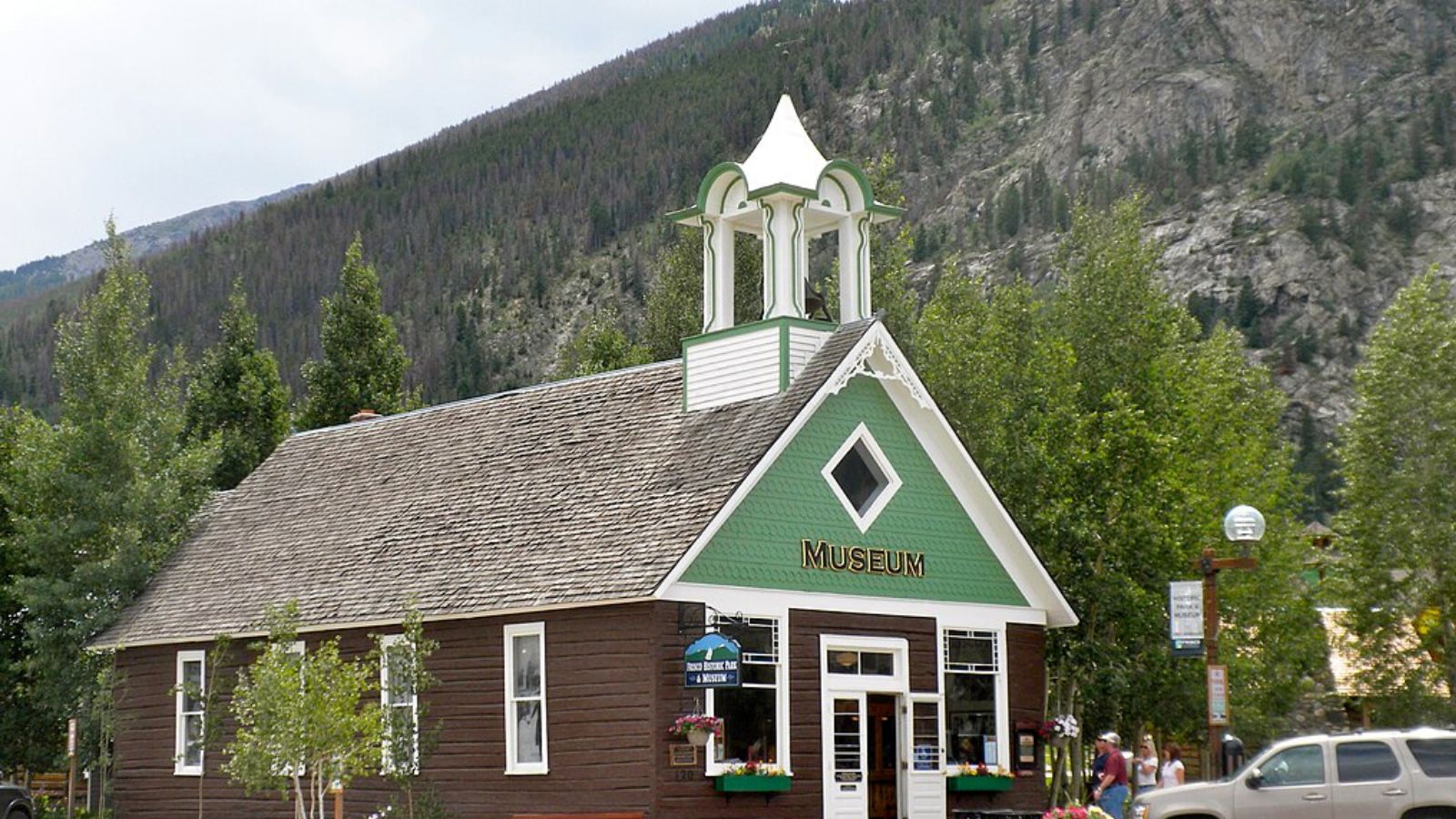
Smallbones, Public domain, via Wikimedia Commons
Why are people willing to pay so much to live here? What’s special about it?
Frisco serves as the gateway to four major ski resorts: Copper Mountain, Keystone, Breckenridge, and Arapahoe Basin, making it ideal for skiing enthusiasts. The town sits on the shores of Lake Dillon, providing year-round recreation including sailing, fishing, and hiking. Residents enjoy a true mountain town atmosphere with local shops, restaurants, and community events.
The area appeals to outdoor enthusiasts who want access to world-class skiing without paying resort town premiums. Frisco offers more affordable housing options compared to Vail or Aspen while providing similar outdoor access. Many buyers use properties as vacation homes or rental investments, taking advantage of the town’s central location and year-round appeal.
How Frisco Rose to Prominence
Frisco was established in 1873 as a mining camp during Colorado’s silver boom, strategically located at the intersection of mountain valleys. The town survived the mining bust by transitioning to logging and serving travelers crossing the Continental Divide. When Interstate 70 was constructed through the area in the 1970s, Frisco gained unprecedented accessibility from Denver and other Front Range cities.
The construction of Lake Dillon in the 1960s transformed the area’s appeal, creating a recreational centerpiece that attracted summer visitors and real estate development. As nearby ski resorts expanded through the 1980s and 1990s, Frisco became a logical base for skiers seeking more affordable accommodations. The town’s development as a year-round destination accelerated with improved amenities and the growth of Summit County as a major recreation area.
3 Interesting Tidbits
1. Lake Creation – Lake Dillon was created in the 1960s by damming the Blue River, requiring the relocation of the original town of Dillon and creating Frisco’s waterfront location.
2. Historic Preservation – The Frisco Historic Park preserves original log cabins and buildings from the 1880s mining era, maintaining the town’s connection to its frontier heritage.
3. Elevation Challenge – At 9,097 feet above sea level, Frisco is one of the highest incorporated towns in North America, requiring visitors to adjust to the thin mountain air.
22. Eagle – 185% Home Price Increase Since 2010

- 2010: $358,054
- 2011: $304,264
- 2012: $315,137
- 2013: $343,826
- 2014: $381,629
- 2015: $410,621
- 2016: $455,821
- 2017: $492,760
- 2018: $526,559
- 2019: $550,510
- 2020: $565,449
- 2021: $754,118
- 2022: $921,460
- 2023: $913,314
- 2024: $1,003,034
- 2025: $1,021,212
Eagle has achieved remarkable growth with a 185% increase since 2010, reaching $1,021,212 in 2025. The community experienced steady but modest growth through most of the 2010s before exploding during the pandemic years. Values have continued climbing even as other markets cooled, reflecting Eagle’s growing appeal as a Vail Valley alternative.
Why Eagle?
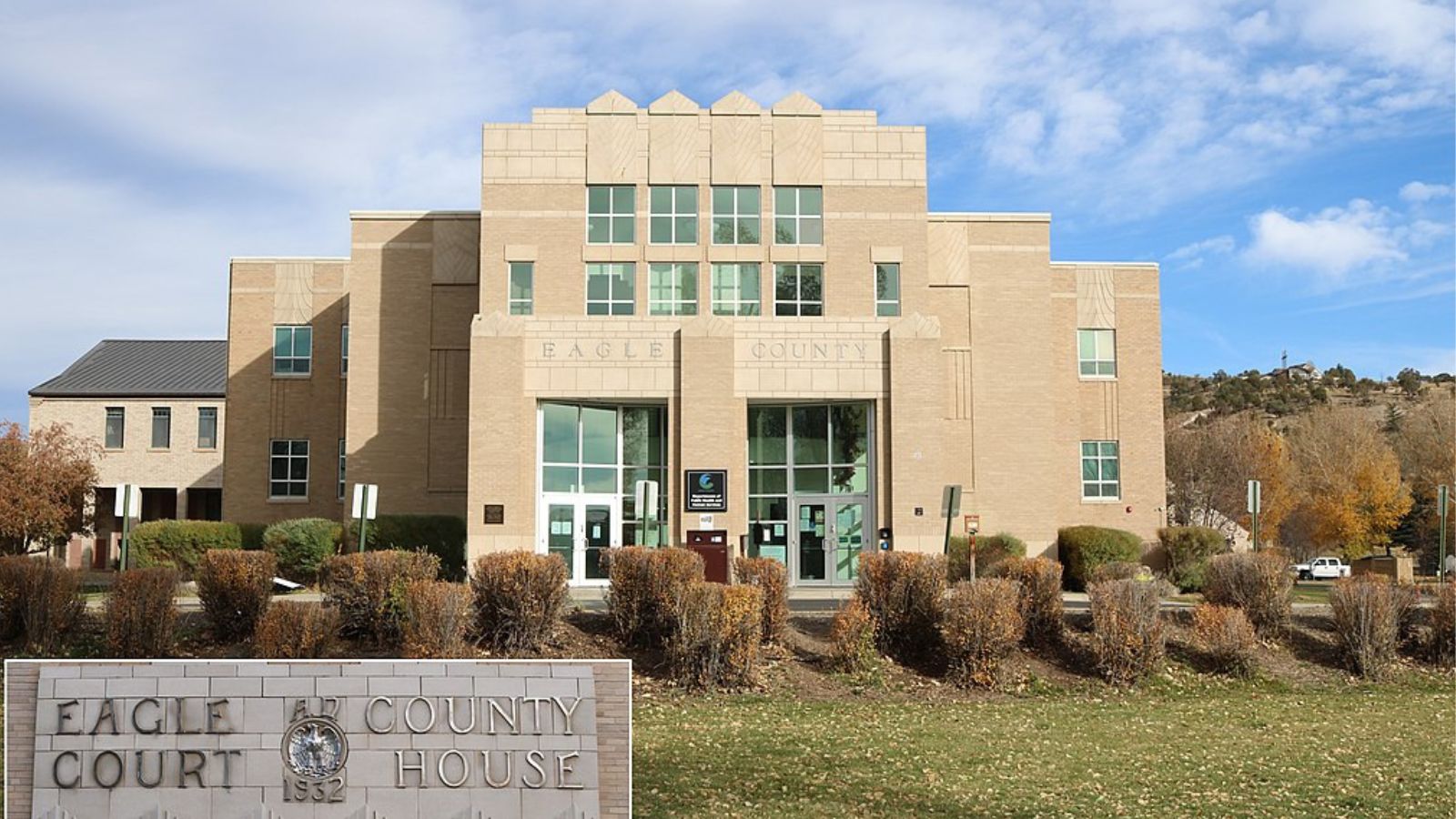
Jeffrey Beall, CC BY 4.0, via Wikimedia Commons
Why are people willing to pay so much to live here? What’s special about it?
Eagle provides access to world-class skiing and mountain recreation at a fraction of Vail’s cost while maintaining authentic Western character. The town sits in the heart of the Eagle Valley, offering dramatic mountain views and outdoor recreation opportunities. Residents enjoy a genuine small-town atmosphere with local businesses, community events, and affordable amenities.
The area attracts families and professionals who work in the Vail Valley but prefer Eagle’s more affordable housing and relaxed pace. Many properties offer larger lots and space for outdoor activities compared to resort towns. Eagle’s location provides easy access to multiple ski areas while maintaining its agricultural and ranching heritage.
How Eagle Rose to Prominence
Eagle was founded in 1905 as an agricultural community in the Eagle Valley, serving local ranchers and farmers with basic services and railroad access. The town remained primarily agricultural through the mid-20th century, with cattle ranching and farming dominating the local economy. Eagle’s transformation began as Vail developed into a major ski resort in the 1960s and 1970s.
As Vail’s popularity and property values soared, Eagle became attractive to workers and residents seeking more affordable housing while remaining connected to the resort economy. The town experienced significant growth pressure in the 1990s and 2000s as second-home buyers and resort workers discovered its combination of mountain living and relative affordability. Eagle has worked to balance growth with preservation of its small-town character and agricultural heritage.
3 Interesting Tidbits
1. Railroad Legacy – Eagle was established as a railroad town on the Denver and Rio Grande Western Railroad, which brought commerce and connectivity to the isolated valley.
2. Agricultural Heritage – The town maintains its ranching character with the annual Eagle County Fair and Rodeo, celebrating the area’s agricultural traditions.
3. Outdoor Access – Eagle serves as a gateway to the Eagles Nest Wilderness Area, providing access to pristine backcountry hiking and fishing opportunities.
21. Franktown – 157% Home Price Increase Since 2010

- 2010: $415,855
- 2011: $416,997
- 2012: $426,081
- 2013: $465,071
- 2014: $510,037
- 2015: $557,141
- 2016: $600,070
- 2017: $650,478
- 2018: $706,516
- 2019: $747,435
- 2020: $781,817
- 2021: $975,077
- 2022: $1,124,951
- 2023: $1,066,554
- 2024: $1,078,295
- 2025: $1,069,427
Franktown has shown impressive appreciation with a 157% increase since 2010, reaching $1,069,427 in 2025. The community experienced consistent growth through the 2010s, accelerating significantly during the pandemic years when prices jumped from around $780,000 to over $1.1 million. Current values reflect strong demand for this Douglas County community’s rural character and large properties.
Why Franktown?
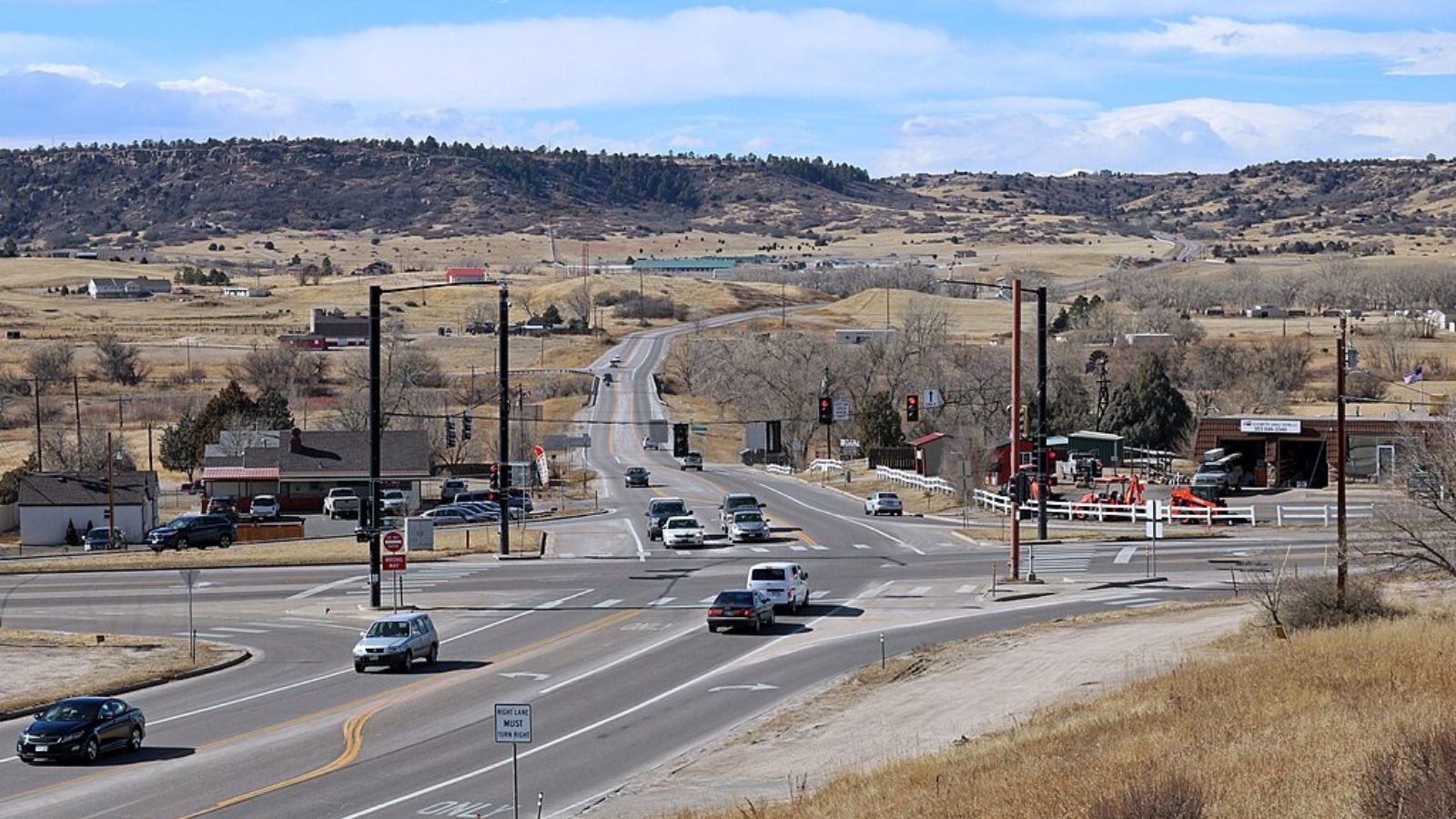
Why are people willing to pay so much to live here? What’s special about it?
Franktown offers expansive properties and rural living within reasonable commuting distance of Denver and the south metro area. The community features large acreages, custom homes, and equestrian facilities while maintaining a country atmosphere. Residents enjoy mountain views, open space, and the privacy that comes with substantial lot sizes.
The area attracts buyers seeking space for horses, outdoor activities, and custom homes without the isolation of true mountain communities. Many properties feature outbuildings, pastures, and room for agricultural activities. Franktown’s location provides access to quality schools and suburban amenities while preserving a rural lifestyle that’s increasingly rare near major metropolitan areas.
How Franktown Rose to Prominence
Franktown was established in 1859 by Daniel Frank, who built a trading post and stage station along the Cherokee Trail. The community served travelers and settlers moving through the area, providing supplies and shelter on the route between Colorado Springs and Denver. The town remained a small agricultural center for over a century, supporting local ranchers and farmers.
The area’s transformation began in the 1980s and 1990s as Denver’s suburban growth reached south into Douglas County. Franktown’s large lots and rural character appealed to buyers seeking alternatives to traditional suburban development. The community has worked to preserve its agricultural heritage while accommodating residential growth, maintaining larger minimum lot sizes and rural zoning that supports the area’s character.
3 Interesting Tidbits
1. Trading Post History – The original Franktown trading post served as a crucial stop on the Cherokee Trail, providing supplies to gold seekers and settlers in the 1860s.
2. Rural Preservation – Douglas County’s zoning in the Franktown area requires minimum 35-acre lots in many areas, helping preserve the community’s agricultural character.
3. Equestrian Culture – The area maintains a strong horse culture with numerous boarding facilities, riding trails, and equestrian events that connect to Colorado’s ranching heritage.
20. Niwot – 137% Home Price Increase Since 2010

- 2010: $467,123
- 2011: $454,524
- 2012: $464,474
- 2013: $493,883
- 2014: $532,739
- 2015: $573,259
- 2016: $645,382
- 2017: $694,359
- 2018: $726,431
- 2019: $754,361
- 2020: $810,797
- 2021: $971,338
- 2022: $1,158,569
- 2023: $1,079,522
- 2024: $1,107,895
- 2025: $1,109,042
Niwot has achieved strong growth with a 137% increase since 2010, reaching $1,109,042 in 2025. This Boulder County community experienced steady appreciation through the 2010s before surging during the pandemic years when prices exceeded $1.1 million. Current values reflect Niwot’s appeal as a small-town alternative to Boulder with similar access to outdoor recreation and employment centers.
Why Niwot?

Why are people willing to pay so much to live here? What’s special about it?
Niwot provides small-town charm and community character while offering proximity to Boulder’s employment and cultural opportunities. The historic downtown features local shops, restaurants, and community events that create a strong sense of place. Residents enjoy access to open space, trails, and mountain recreation while living in a more intimate community setting.
The area attracts families and professionals who want alternatives to Boulder’s density and cost while maintaining access to the region’s benefits. Many properties feature larger lots and custom homes compared to Boulder’s urban areas. Niwot’s location provides reasonable commuting access to Boulder, Denver, and Longmont while preserving its historic character and small-town atmosphere.
How Niwot Rose to Prominence
Niwot was established in 1875 as a railroad town on the Colorado Central Railroad, named after Chief Niwot of the Arapaho tribe who had lived in the area. The community served as an agricultural center for local farmers and provided services to travelers along the railroad line. Niwot maintained its agricultural character through most of the 20th century, supporting local farming and some light industry.
The town’s transformation began in the 1970s and 1980s as Boulder’s growth created demand for nearby communities with more affordable housing and small-town character. Niwot’s historic downtown and agricultural heritage attracted families and professionals seeking alternatives to suburban development. The community has worked to preserve its historic character while accommodating growth, maintaining local businesses and community traditions.
3 Interesting Tidbits
1. Native Heritage – The town is named after Chief Niwot (Left Hand) of the Arapaho, who led his people in the Boulder Valley before white settlement.
2. Agricultural Legacy – Niwot was a major sugar beet growing area, with the local railroad shipping tons of beets to processing plants in surrounding communities.
3. Community Spirit – The annual Niwot Market features local vendors and artisans, maintaining the town’s tradition of supporting local businesses and community connections.
19. Foxfield – 152% Home Price Increase Since 2010

- 2010: $442,832
- 2011: $429,523
- 2012: $462,713
- 2013: $503,617
- 2014: $533,817
- 2015: $573,120
- 2016: $614,126
- 2017: $663,533
- 2018: $732,173
- 2019: $775,382
- 2020: $786,588
- 2021: $1,000,469
- 2022: $1,158,552
- 2023: $1,089,530
- 2024: $1,126,908
- 2025: $1,115,064
Foxfield has demonstrated remarkable appreciation with a 152% increase since 2010, reaching $1,115,064 in 2025. The Douglas County community experienced steady growth through the 2010s before surging during the pandemic years when prices exceeded $1.1 million. Current values reflect strong demand for this upscale community’s large properties and equestrian amenities.
Why Foxfield?
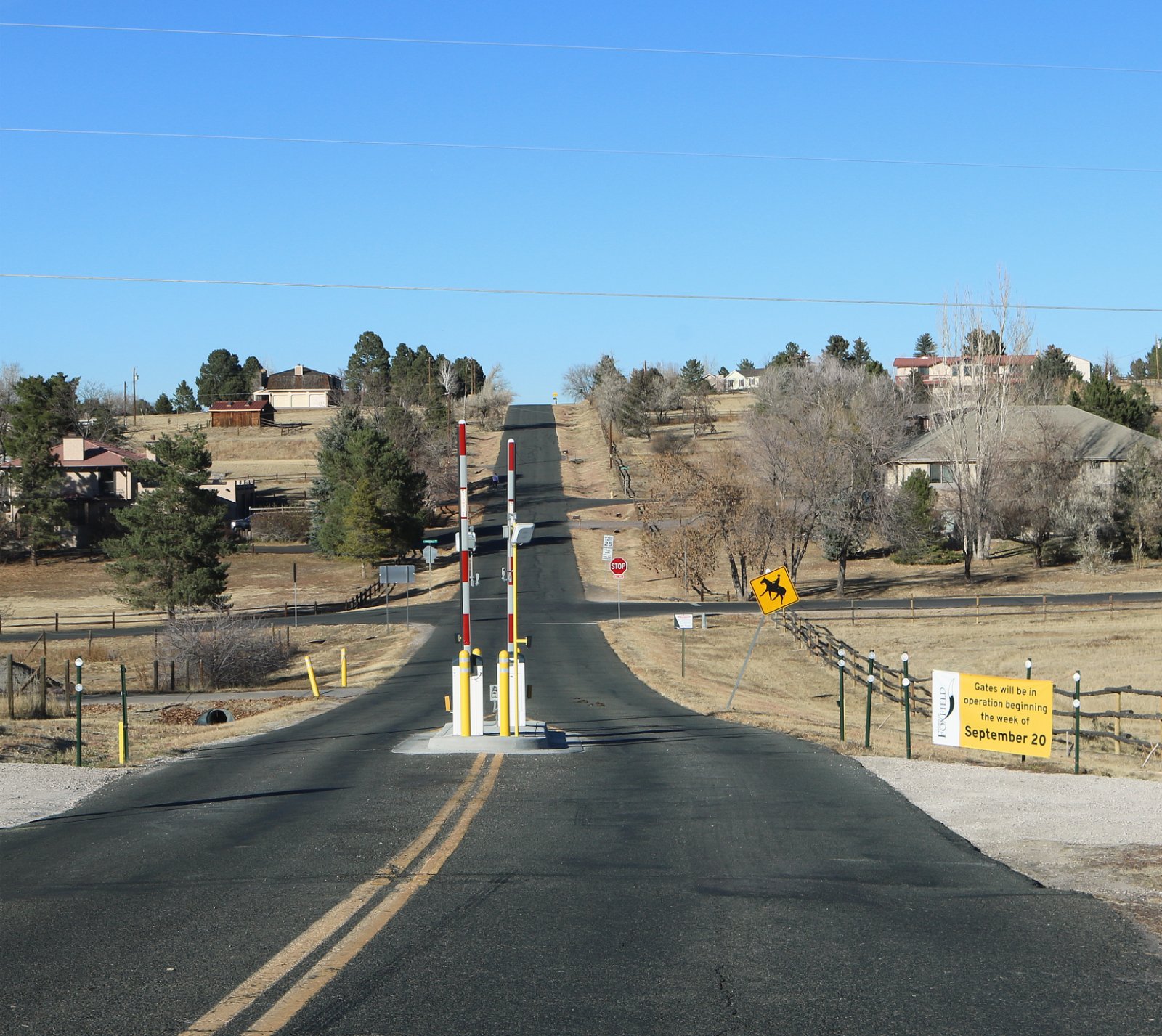
Why are people willing to pay so much to live here? What’s special about it?
Foxfield offers expansive custom homes on large acreages with equestrian facilities and rural character within commuting distance of Denver. The community features minimum 2.5-acre lots, allowing for horses, privacy, and extensive landscaping. Residents enjoy mountain views, open space, and a country lifestyle while maintaining access to urban amenities and quality schools.
The area attracts affluent families seeking space and luxury without sacrificing convenience or educational opportunities. Many properties feature custom architecture, professional landscaping, and outbuildings for horses or hobbies. Foxfield’s restrictive covenants and large lot requirements have preserved property values and community character while preventing overdevelopment.
How Foxfield Rose to Prominence
Foxfield was developed in the 1980s as an upscale residential community on former agricultural land in south Douglas County. The developers planned the community around large lots and equestrian amenities, attracting buyers seeking luxury country living near Denver. Strict architectural guidelines and homeowners association standards were established to maintain property values and rural character.
The community’s growth accelerated through the 1990s and 2000s as Denver’s prosperity created demand for luxury suburban alternatives. Foxfield’s combination of large lots, custom homes, and equestrian facilities appealed to successful professionals and business owners. The area has maintained its exclusive character through careful planning and restrictive covenants that preserve the community’s rural atmosphere and property values.
3 Interesting Tidbits
1. Minimum Standards – All properties in Foxfield must be at least 2.5 acres, ensuring privacy and maintaining the community’s rural character.
2. Equestrian Focus – The community was specifically designed to accommodate horses, with many properties featuring barns, pastures, and access to riding trails.
3. Architectural Control – Strict design guidelines ensure that all homes meet high architectural standards, contributing to consistent property values throughout the community.
18. Genesee – 126% Home Price Increase Since 2010

- 2010: $495,102
- 2011: $472,659
- 2012: $476,490
- 2013: $516,189
- 2014: $546,534
- 2015: $580,356
- 2016: $614,544
- 2017: $657,862
- 2018: $700,040
- 2019: $741,462
- 2020: $792,204
- 2021: $957,251
- 2022: $1,150,117
- 2023: $1,084,648
- 2024: $1,113,769
- 2025: $1,120,655
Genesee has shown strong appreciation with a 126% increase since 2010, reaching $1,120,655 in 2025. This Jefferson County mountain community experienced steady growth through the 2010s before accelerating during the pandemic years when prices exceeded $1.1 million. Current values reflect Genesee’s unique position as an exclusive mountain enclave with easy access to Denver.
Why Genesee?

Why are people willing to pay so much to live here? What’s special about it?
Genesee offers exclusive mountain living in a gated community setting with dramatic views and proximity to Denver. The community features custom homes on wooded lots, private roads, and recreational amenities including golf and hiking trails. Residents enjoy privacy, security, and mountain lifestyle while maintaining reasonable commuting access to urban employment and amenities.
The area attracts affluent professionals and executives who want mountain living without the isolation of remote communities. Many properties feature custom architecture designed to blend with the forested environment and capture mountain views. Genesee’s restricted access and homeowners association standards have preserved property values and community character.
How Genesee Rose to Prominence
Genesee was established in the 1970s as an upscale planned community in the foothills west of Denver, developed on former ranch land with dramatic mountain views. The community was designed around environmental preservation and low-density development, featuring custom homes on large wooded lots. Early marketing targeted successful Denver professionals seeking mountain living with urban convenience.
The development included recreational amenities like golf and tennis to create a resort-like atmosphere for residents. Genesee’s combination of privacy, natural beauty, and proximity to Denver made it attractive to affluent buyers throughout its development. The community has maintained its exclusive character through restrictive covenants and careful management of growth and amenities.
3 Interesting Tidbits
1. Gated Community – Genesee was one of Colorado’s first gated residential communities, providing security and exclusivity for residents.
2. Environmental Design – The community was planned around preserving natural terrain and vegetation, with homes designed to blend into the forested hillsides.
3. Golf Heritage – The Genesee Golf Course was designed as a centerpiece amenity, providing recreation and maintaining open space within the community.
17. Breckenridge – 129% Home Price Increase Since 2010

- 2010: $520,108
- 2011: $499,693
- 2012: $507,761
- 2013: $532,736
- 2014: $554,879
- 2015: $589,270
- 2016: $646,025
- 2017: $740,989
- 2018: $812,985
- 2019: $872,752
- 2020: $899,258
- 2021: $1,115,770
- 2022: $1,394,021
- 2023: $1,246,475
- 2024: $1,213,976
- 2025: $1,193,569
Breckenridge has achieved a 129% increase since 2010, reaching $1,193,569 in 2025. This iconic ski town experienced steady growth through the 2010s before exploding during the pandemic years when prices peaked near $1.4 million. Current values reflect Breckenridge’s position as one of Colorado’s most accessible and popular ski destinations with historic charm and year-round appeal.
Why Breckenridge?

Why are people willing to pay so much to live here? What’s special about it?
Breckenridge combines world-class skiing with historic Victorian charm and year-round mountain recreation opportunities. The town offers authentic Western character with a preserved downtown, local shops, and community events while providing access to modern ski resort amenities. Residents enjoy four-season recreation including skiing, hiking, mountain biking, and festivals.
The area attracts outdoor enthusiasts and vacation home buyers who appreciate Breckenridge’s accessibility from Denver and authentic mountain town atmosphere. Many properties offer ski-in/ski-out access or easy transit to the slopes. The town’s combination of historic preservation and modern amenities creates unique appeal for buyers seeking both character and convenience.
How Breckenridge Rose to Prominence
Breckenridge was founded in 1859 as a gold mining camp and became one of Colorado’s most successful mining towns, producing millions of dollars in gold through the late 1800s. The town survived the mining bust by transitioning to limited tourism and maintaining a small year-round population through the early-to-mid 20th century. Breckenridge’s transformation began in 1961 when the ski area opened, initially as a modest local hill.
The ski resort’s expansion through the 1970s and 1980s, combined with the town’s well-preserved Victorian architecture, created a unique destination that balanced authenticity with modern recreation. Breckenridge’s proximity to Denver via Interstate 70 made it accessible to Front Range skiers, driving real estate demand. The town has worked to preserve its historic character while accommodating growth, maintaining the Victorian downtown as a centerpiece attraction.
3 Interesting Tidbits
1. Gold Rush Legacy – Breckenridge produced over $30 million in gold during its mining heyday, making it one of Colorado’s richest mining districts.
2. Historic Preservation – The town has over 250 buildings listed on the National Register of Historic Places, creating one of Colorado’s best-preserved Victorian mining districts.
3. High Altitude Skiing – Breckenridge’s base elevation of 9,600 feet makes it one of the highest ski resort towns in North America, ensuring reliable snow conditions.
16. Placerville – 74% Home Price Increase Since 2018

- 2010: N/A
- 2011: N/A
- 2012: N/A
- 2013: N/A
- 2014: N/A
- 2015: N/A
- 2016: N/A
- 2017: N/A
- 2018: $720,159
- 2019: $731,919
- 2020: $780,563
- 2021: $1,030,421
- 2022: $1,331,538
- 2023: $1,193,808
- 2024: $1,227,571
- 2025: $1,252,206
Placerville has shown impressive growth with a 74% increase since 2018 when data became available, reaching $1,252,206 in 2025. This remote mountain community experienced dramatic appreciation during the pandemic years, nearly doubling from 2020 to 2022. Current values reflect the area’s appeal as a historic mining town with authentic Western character and proximity to Telluride’s recreational amenities.
Why Placerville?

Why are people willing to pay so much to live here? What’s special about it?
Placerville offers authentic Colorado mining town character with dramatic mountain scenery and relative proximity to Telluride’s world-class skiing. The community maintains its historic Western atmosphere with original buildings and a genuine frontier feel that’s increasingly rare in Colorado’s resort areas. Residents enjoy vast open space, wildlife viewing, and access to wilderness recreation.
The area attracts buyers seeking authentic mountain living with historical significance and natural beauty. Many properties feature large acreages with mining claims, historic structures, and spectacular alpine views. Placerville appeals to those who value solitude, history, and connection to Colorado’s mining heritage while maintaining some access to modern amenities in nearby communities.
How Placerville Rose to Prominence
Placerville was established in 1876 as a silver mining camp during Colorado’s mining boom, named after similar placers (surface mining deposits) found in California. The town served multiple mining operations in the surrounding mountains and supported several hundred residents during its peak years. Like many mining communities, Placerville declined after silver prices collapsed in the 1890s, leaving only a small population to maintain the town.
The modern revival began in the 1970s as Telluride developed into a major ski destination, creating demand for nearby properties with historic character and mountain settings. Placerville’s authentic buildings and spectacular location attracted buyers seeking alternatives to resort town development. The community has preserved much of its 19th-century character while accommodating selective restoration and new construction that respects the area’s historical significance.
3 Interesting Tidbits
1. Mining Heritage – The town produced significant quantities of silver and gold from the 1870s through the 1890s, with several major mines operating in the surrounding mountains.
2. Historic Preservation – Many original 1880s buildings remain standing, including the old general store and mining structures that provide authentic glimpses into frontier life.
3. Geographic Isolation – Placerville sits in a remote mountain valley accessible only by winding mountain roads, preserving its historic character and natural setting.
15. Avon – 162% Home Price Increase Since 2010

- 2010: $479,969
- 2011: $409,240
- 2012: $424,968
- 2013: $462,576
- 2014: $502,012
- 2015: $533,918
- 2016: $570,633
- 2017: $598,215
- 2018: $618,743
- 2019: $642,496
- 2020: $628,683
- 2021: $856,954
- 2022: $1,120,074
- 2023: $1,131,001
- 2024: $1,235,527
- 2025: $1,256,586
Avon has achieved remarkable growth with a 162% increase since 2010, reaching $1,256,586 in 2025. This Eagle County community experienced steady but modest growth through the 2010s before exploding during the pandemic years when prices more than doubled from 2020 levels. Current values reflect Avon’s position as a gateway to Beaver Creek and Vail with modern amenities and ski access.
Why Avon?

Why are people willing to pay so much to live here? What’s special about it?
Avon provides direct access to Beaver Creek’s world-class skiing and luxury amenities while offering more modern housing options than historic Vail Village. The community features contemporary developments, convenient shopping, and easy transportation to multiple ski areas. Residents enjoy resort-quality amenities with a more suburban feel compared to traditional mountain towns.
The area attracts families and professionals who want ski resort access with modern conveniences and amenities. Many properties offer ski-in/ski-out access to Beaver Creek or convenient shuttle service to the slopes. Avon’s planned development and newer construction appeal to buyers seeking contemporary mountain living with luxury finishes and resort-style services.
How Avon Rose to Prominence
Avon was developed in the 1970s as a planned community to support the new Beaver Creek ski resort, providing housing and services for the growing Vail Valley recreation industry. The town was designed as a modern alternative to Vail’s historic character, featuring contemporary architecture and suburban-style amenities. Early development focused on condominiums and townhomes to accommodate resort workers and visitors.
The community’s growth accelerated through the 1980s and 1990s as Beaver Creek established itself as a world-class destination and Avon became the valley’s commercial center. Major retail and dining developments, including the Westin Riverfront Resort, transformed Avon into a destination in its own right. The town has continued evolving as a modern mountain community that balances resort amenities with residential livability.
3 Interesting Tidbits
1. Planned Development – Avon was one of Colorado’s first communities specifically planned to support a major ski resort, designed from scratch in the 1970s.
2. Transit Hub – The town serves as a transportation center for the Vail Valley, with bus service connecting multiple ski areas and mountain communities.
3. Recreational Amenities – Avon features extensive recreational facilities including a recreation center, golf course, and miles of paved bike paths connecting to regional trail systems.
14. Steamboat Springs – 188% Home Price Increase Since 2010

- 2010: $445,310
- 2011: $428,806
- 2012: $435,339
- 2013: $450,879
- 2014: $467,436
- 2015: $483,928
- 2016: $530,678
- 2017: $577,943
- 2018: $612,100
- 2019: $657,073
- 2020: $688,139
- 2021: $932,714
- 2022: $1,203,701
- 2023: $1,163,082
- 2024: $1,254,101
- 2025: $1,281,798
Steamboat Springs has achieved exceptional growth with a 188% increase since 2010, reaching $1,281,798 in 2025. This renowned ski town experienced steady appreciation through the 2010s before surging during the pandemic years when prices nearly doubled. Current values reflect Steamboat’s unique position as both a world-class ski destination and authentic Western ranching community with natural hot springs.
Why Steamboat Springs?

Why are people willing to pay so much to live here? What’s special about it?
Steamboat Springs offers a rare combination of world-class skiing, natural hot springs, and authentic Western culture that distinguishes it from other Colorado resort towns. The community maintains its ranching heritage while providing modern ski resort amenities and year-round outdoor recreation. Residents enjoy a genuine mountain town atmosphere with local businesses, rodeos, and community traditions.
The area attracts outdoor enthusiasts who value authenticity over glitz, seeking access to pristine wilderness and diverse recreational opportunities. Natural hot springs provide unique relaxation options, while the town’s Olympic skiing heritage adds prestige. Steamboat’s combination of accessibility, authenticity, and amenities creates exceptional appeal for both full-time residents and vacation home buyers.
How Steamboat Springs Rose to Prominence
Steamboat Springs was founded in the 1870s as a ranching and farming community, named after the natural hot springs that early settlers thought sounded like a steamboat. The town developed around agriculture and the Union Pacific Railroad, serving local ranchers and providing access to distant markets. Natural hot springs attracted early tourists seeking health benefits and relaxation.
The transformation into a ski destination began in 1963 when the ski area opened, building on the area’s Nordic skiing traditions and Olympic athletes. Steamboat’s development as a resort maintained its Western character, avoiding the European themes adopted by other Colorado ski towns. The community has successfully balanced resort development with preservation of its ranching heritage and natural hot springs attractions.
3 Interesting Tidbits
1. Hot Springs Heritage – The town features over 150 natural hot springs, with several developed for public use, including the famous Strawberry Park Hot Springs.
2. Olympic Legacy – Steamboat Springs has produced more Olympic athletes than any other town its size, earning the nickname “Ski Town USA” for its winter sports achievements.
3. Ranching Culture – The annual Steamboat Springs Pro Rodeo maintains the town’s authentic Western heritage, celebrating its continuing connection to ranching and cowboy culture.
13. Basalt – 169% Home Price Increase Since 2010

- 2010: $502,748
- 2011: $442,536
- 2012: $454,951
- 2013: $512,357
- 2014: $555,862
- 2015: $592,934
- 2016: $631,855
- 2017: $660,966
- 2018: $694,780
- 2019: $727,842
- 2020: $749,316
- 2021: $975,727
- 2022: $1,232,199
- 2023: $1,241,165
- 2024: $1,338,079
- 2025: $1,354,699
Basalt has demonstrated remarkable appreciation with a 169% increase since 2010, reaching $1,354,699 in 2025. This Roaring Fork Valley community experienced steady growth through the 2010s before exploding during the pandemic years when prices more than doubled. Current values continue climbing, reflecting Basalt’s growing appeal as an alternative to Aspen with similar mountain recreation access.
Why Basalt?

Why are people willing to pay so much to live here? What’s special about it?
Basalt provides access to Aspen’s world-class recreation and cultural amenities at a fraction of the cost while maintaining authentic small-town character. The community sits at the confluence of the Fryingpan and Roaring Fork Rivers, offering exceptional fishing, hiking, and outdoor recreation. Residents enjoy mountain views, river access, and proximity to multiple ski areas.
The area attracts outdoor enthusiasts and professionals who work in the Aspen area but prefer Basalt’s more affordable housing and relaxed atmosphere. Many properties feature river frontage, mountain views, and outdoor recreation access. Basalt’s location provides convenient access to Aspen, Snowmass, and surrounding wilderness areas while maintaining its own community identity and local businesses.
How Basalt Rose to Prominence
Basalt was established in the 1880s as a railroad town on the Denver and Rio Grande Railroad, serving local ranchers and providing access to Aspen’s silver mines. The town remained a small agricultural and transportation center through most of the 20th century, supporting local farming and serving as a gateway to the upper Roaring Fork Valley. Basalt’s transformation began as Aspen developed into a major resort destination.
As Aspen’s property values soared in the 1970s and 1980s, Basalt became attractive to workers and residents seeking more affordable housing while maintaining access to the resort economy. The town experienced significant growth pressure as second-home buyers and outdoor enthusiasts discovered its combination of recreation access and relative affordability. Basalt has worked to balance growth with preservation of its small-town character and outdoor recreation opportunities.
3 Interesting Tidbits
1. River Junction – Basalt sits at the confluence of two renowned trout fishing rivers, the Fryingpan and Roaring Fork, making it a premier destination for fly fishing.
2. Railroad Heritage – The town was a crucial railroad junction for accessing Aspen’s silver mines, with the depot serving as the community’s economic and social center.
3. Outdoor Gateway – Basalt provides access to four different wilderness areas and some of Colorado’s most pristine backcountry recreation opportunities.
12. Carbondale – 252% Home Price Increase Since 2010

- 2010: $397,500
- 2011: $385,182
- 2012: $398,396
- 2013: $441,601
- 2014: $511,214
- 2015: $592,038
- 2016: $627,858
- 2017: $661,404
- 2018: $699,255
- 2019: $721,211
- 2020: $751,303
- 2021: $987,885
- 2022: $1,232,658
- 2023: $1,224,248
- 2024: $1,347,932
- 2025: $1,398,222
Carbondale has achieved extraordinary growth with a 252% increase since 2010, reaching $1,398,222 in 2025. This Roaring Fork Valley community has more than tripled in value, experiencing dramatic acceleration during the pandemic years when prices doubled from 2020 levels. Current values continue climbing, reflecting Carbondale’s transformation from a working-class town to a sought-after mountain community.
Why Carbondale?

Why are people willing to pay so much to live here? What’s special about it?
Carbondale offers authentic mountain town character with access to world-class recreation and Aspen’s cultural amenities at more reasonable prices than resort destinations. The community maintains a genuine Western atmosphere with local businesses, arts scene, and community events while providing outdoor recreation access. Residents enjoy mountain and valley views, recreational opportunities, and a strong sense of community.
The area attracts creative professionals, outdoor enthusiasts, and service industry workers who want mountain living without resort town pretension. Many properties feature mountain views, outdoor access, and authentic Western architecture. Carbondale’s combination of affordability, authenticity, and recreation access has made it increasingly attractive to buyers seeking alternatives to expensive resort communities.
How Carbondale Rose to Prominence
Carbondale was founded in the 1880s as a coal mining and railroad town, providing fuel for locomotives and heating throughout the region. The town served as a transportation hub for the Colorado Midland Railroad and supported local agriculture and ranching. After coal mining declined, Carbondale remained a working-class community serving the growing Aspen area through the mid-20th century.
The town’s transformation accelerated in the 1990s and 2000s as Aspen’s cost of living pushed workers and artists to seek more affordable nearby communities. Carbondale’s authentic character, artistic community, and outdoor recreation access attracted buyers seeking alternatives to resort town development. The community has worked to preserve its character while accommodating growth, maintaining local businesses and community traditions.
3 Interesting Tidbits
1. Coal Heritage – The town was named for its extensive coal deposits, which fueled locomotives and provided heating throughout the Colorado mining districts.
2. Arts Community – Carbondale has developed a thriving arts scene with galleries, studios, and annual festivals that celebrate creative expression and community culture.
3. Agricultural Roots – The town maintains connections to its agricultural heritage with local farmers markets and support for regional farming operations.
11. Crested Butte – 200% Home Price Increase Since 2010

- 2010: $475,470
- 2011: $457,215
- 2012: $453,901
- 2013: $473,362
- 2014: $485,010
- 2015: $544,012
- 2016: $587,947
- 2017: $644,050
- 2018: $717,844
- 2019: $813,998
- 2020: $877,993
- 2021: $1,132,089
- 2022: $1,462,467
- 2023: $1,362,974
- 2024: $1,379,197
- 2025: $1,427,709
Crested Butte has tripled in value with a 200% increase since 2010, reaching $1,427,709 in 2025. This iconic mountain town experienced steady growth through the 2010s before surging during the pandemic years when prices nearly doubled from 2020 levels. Current values reflect Crested Butte’s unique appeal as Colorado’s “Wildflower Capital” with authentic mining town character and world-class skiing.
Why Crested Butte?
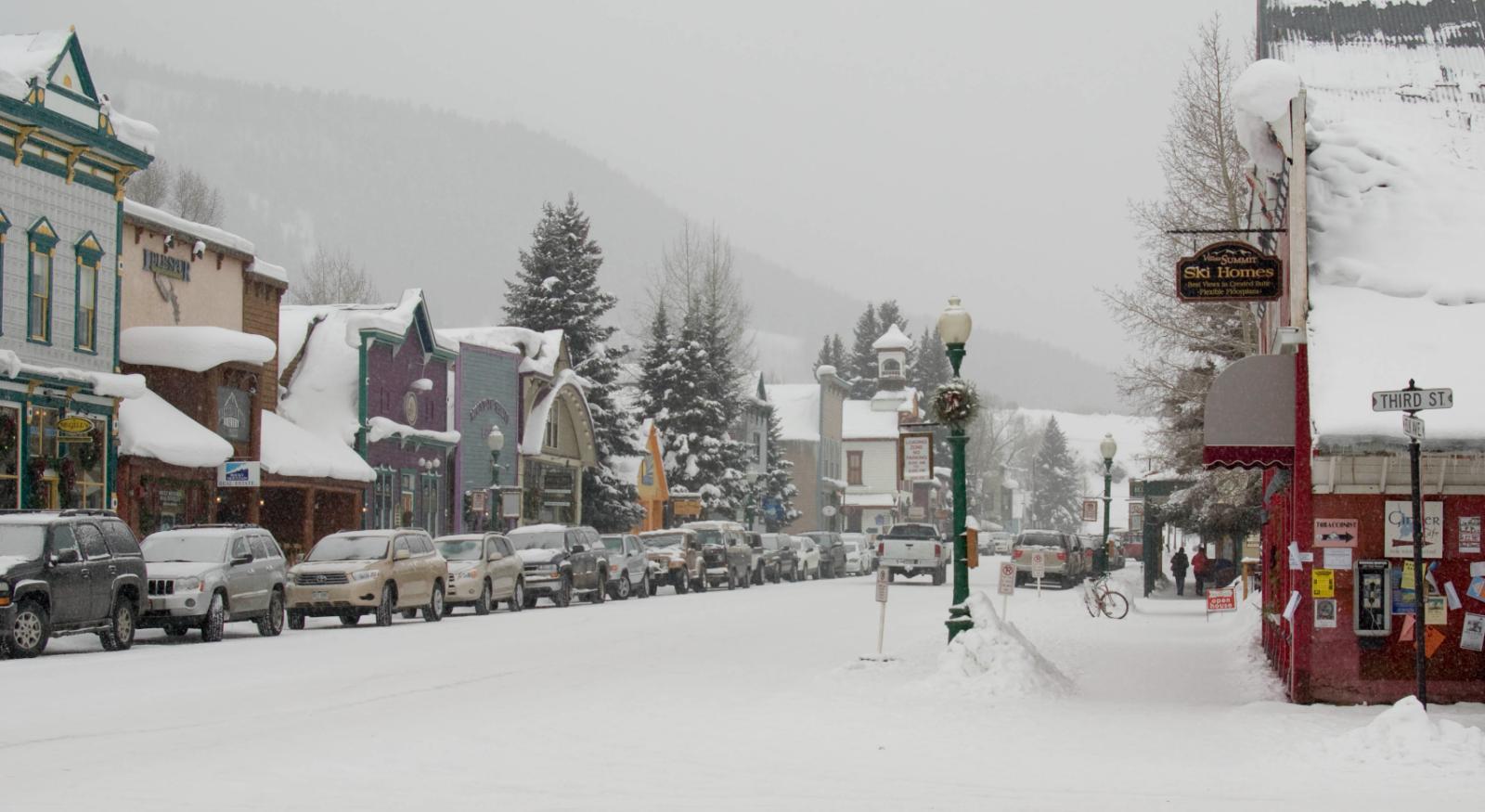
Why are people willing to pay so much to live here? What’s special about it?
Crested Butte offers unparalleled mountain beauty with authentic Victorian mining town character and access to pristine wilderness areas. The community sits in a spectacular alpine valley surrounded by 12,000-foot peaks and vast wildflower meadows. Residents enjoy world-class skiing, hiking, mountain biking, and one of Colorado’s best-preserved historic downtowns.
The area attracts outdoor enthusiasts who value authenticity, natural beauty, and recreational diversity over resort amenities. Many properties feature historic architecture, mountain views, and immediate access to wilderness recreation. Crested Butte’s remote location and authentic character appeal to buyers seeking genuine mountain living without commercialization.
How Crested Butte Rose to Prominence
Crested Butte was established in 1878 as a coal mining camp, supporting local mines and providing fuel for regional railroad operations. The town thrived through the 1880s and 1890s, developing a substantial commercial district and residential areas that remain largely intact today. After mining declined in the early 1900s, Crested Butte became nearly abandoned, preserving its Victorian architecture through benign neglect.
The modern revival began in the 1960s when the ski area opened and outdoor enthusiasts rediscovered the area’s spectacular natural setting. Crested Butte’s development as a destination emphasized preservation of its historic character and natural environment. The community has maintained its authentic mining town atmosphere while becoming a world-renowned destination for skiing, mountain biking, and wildflower viewing.
3 Interesting Tidbits
1. Wildflower Capital – Crested Butte is known as Colorado’s “Wildflower Capital” for its spectacular summer displays of alpine flowers in surrounding meadows.
2. Historic Preservation – The entire downtown is listed on the National Register of Historic Places, preserving one of Colorado’s most authentic Victorian mining districts.
3. Mountain Biking Mecca – The area is considered the birthplace of mountain biking, with local residents pioneering the sport on surrounding mountain trails in the 1970s.
10. Greenwood Village – 137% Home Price Increase Since 2010

- 2010: $608,610
- 2011: $576,158
- 2012: $593,394
- 2013: $656,258
- 2014: $706,097
- 2015: $749,073
- 2016: $792,779
- 2017: $826,961
- 2018: $867,939
- 2019: $916,156
- 2020: $956,999
- 2021: $1,167,152
- 2022: $1,375,045
- 2023: $1,336,555
- 2024: $1,412,539
- 2025: $1,445,416
Greenwood Village has achieved strong growth with a 137% increase since 2010, reaching $1,445,416 in 2025. This upscale Denver suburb experienced consistent appreciation through the 2010s before accelerating during the pandemic years when prices jumped significantly. Current values reflect Greenwood Village’s position as one of Colorado’s most prestigious suburban communities with exceptional amenities and location.
Why Greenwood Village?
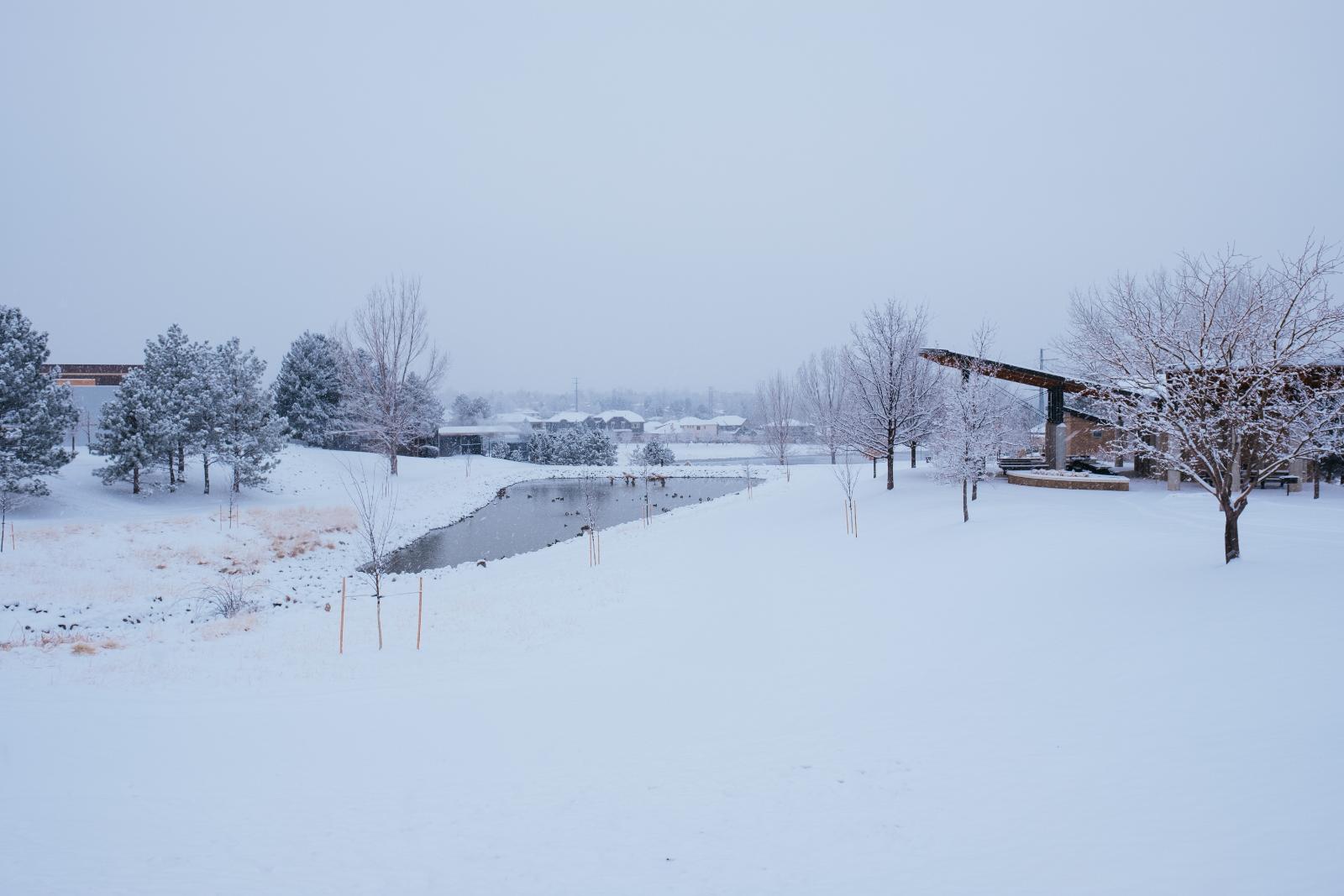
Why are people willing to pay so much to live here? What’s special about it?
Greenwood Village offers luxury suburban living with excellent schools, upscale shopping, and proximity to Denver’s business centers. The community features large custom homes, manicured neighborhoods, and extensive recreational amenities including golf courses and parks. Residents enjoy top-rated schools, low crime rates, and easy access to Denver International Airport and downtown employment.
The area attracts affluent families and business executives who want suburban convenience with luxury amenities and excellent educational opportunities. Many properties feature custom architecture, large lots, and proximity to recreational facilities. Greenwood Village’s combination of prestige, convenience, and quality of life makes it highly desirable for successful professionals and their families.
How Greenwood Village Rose to Prominence
Greenwood Village was incorporated in 1950 as a small suburban community south of Denver, initially developed around country clubs and golf courses. The area remained primarily rural with some upscale residential development through the 1960s and 1970s. Growth accelerated in the 1980s and 1990s as Denver’s economy expanded and the area became attractive to affluent families seeking suburban alternatives.
The community’s development emphasized quality over quantity, attracting upscale retailers, businesses, and residential developments that catered to affluent residents. Greenwood Village became a major suburban employment center with the Denver Tech Center while maintaining its residential appeal. The city has maintained high development standards that preserve property values and community character.
3 Interesting Tidbits
1. Planned Excellence – The city was developed around the concept of creating an ideal suburban community with high standards for development and maintenance.
2. Business Hub – Greenwood Village hosts numerous corporate headquarters and is part of the Denver Tech Center, one of the largest employment centers in the western United States.
3. Golf Heritage – The community was built around multiple golf courses, which continue to serve as centerpieces for residential development and recreation.
9. Vail – 138% Home Price Increase Since 2010

- 2010: $684,230
- 2011: $594,747
- 2012: $613,429
- 2013: $671,647
- 2014: $723,158
- 2015: $763,664
- 2016: $816,648
- 2017: $864,609
- 2018: $903,227
- 2019: $926,546
- 2020: $942,896
- 2021: $1,212,701
- 2022: $1,520,189
- 2023: $1,506,249
- 2024: $1,620,637
- 2025: $1,625,084
Vail has achieved a 138% increase since 2010, reaching $1,625,084 in 2025. This world-famous ski resort experienced steady growth through the 2010s before surging during the pandemic years when prices jumped from under $1 million to over $1.6 million. Current values reflect Vail’s position as one of the world’s premier ski destinations with unmatched amenities and Alpine-inspired architecture.
Why Vail?

Why are people willing to pay so much to live here? What’s special about it?
Vail represents the pinnacle of American ski resort luxury with world-class skiing, European-inspired village atmosphere, and unparalleled amenities. The resort offers over 5,200 acres of skiable terrain, luxury shopping, fine dining, and year-round cultural events. Residents enjoy ski-in/ski-out access, concierge services, and a pedestrian-friendly village designed for luxury mountain living.
The area attracts ultra-wealthy individuals who value prestige, convenience, and world-class recreational opportunities. Many properties offer direct ski access, luxury finishes, and resort-style services that justify premium pricing. Vail’s international reputation and limited real estate supply create exceptional investment potential and lifestyle value for affluent buyers.
How Vail Rose to Prominence
Vail was conceived in the early 1960s by Pete Seibert and Earl Eaton, who envisioned creating America’s premier ski destination in the Gore Creek valley. The ski area opened in 1962 with a European-inspired base village designed to rival Alpine resorts. Early development emphasized luxury amenities and architectural themes that created a unique American interpretation of European ski culture.
Vail’s growth accelerated through the 1970s and 1980s as it established itself as a world-class destination, hosting major ski competitions and attracting international visitors. The resort’s development has consistently focused on luxury and exclusivity, with limited real estate supply and high development standards. Vail’s reputation as a premier destination has made it a symbol of American ski resort luxury and a magnet for affluent property buyers.
3 Interesting Tidbits
1. Back Bowl Pioneer – Vail was the first major American ski resort to develop extensive back bowl skiing, offering over 3,000 acres of bowl terrain.
2. European Design – The village was specifically designed to emulate European Alpine architecture, with heated sidewalks and pedestrian-only areas in the core village.
3. Year-Round Destination – Vail hosts major summer events including music festivals, golf tournaments, and outdoor adventures that maintain property values beyond ski season.
8. Columbine Valley – 147% Home Price Increase Since 2010

- 2010: $672,866
- 2011: $631,480
- 2012: $657,022
- 2013: $718,446
- 2014: $766,843
- 2015: $823,212
- 2016: $883,368
- 2017: $930,305
- 2018: $971,757
- 2019: $1,027,450
- 2020: $1,080,565
- 2021: $1,335,428
- 2022: $1,652,537
- 2023: $1,604,277
- 2024: $1,661,403
- 2025: $1,663,810
Columbine Valley has achieved impressive growth with a 147% increase since 2010, reaching $1,663,810 in 2025. This exclusive Arapahoe County enclave experienced steady appreciation through the 2010s before accelerating during the pandemic years when prices jumped significantly. Current values reflect Columbine Valley’s position as one of Colorado’s most prestigious and secluded residential communities.
Why Columbine Valley?
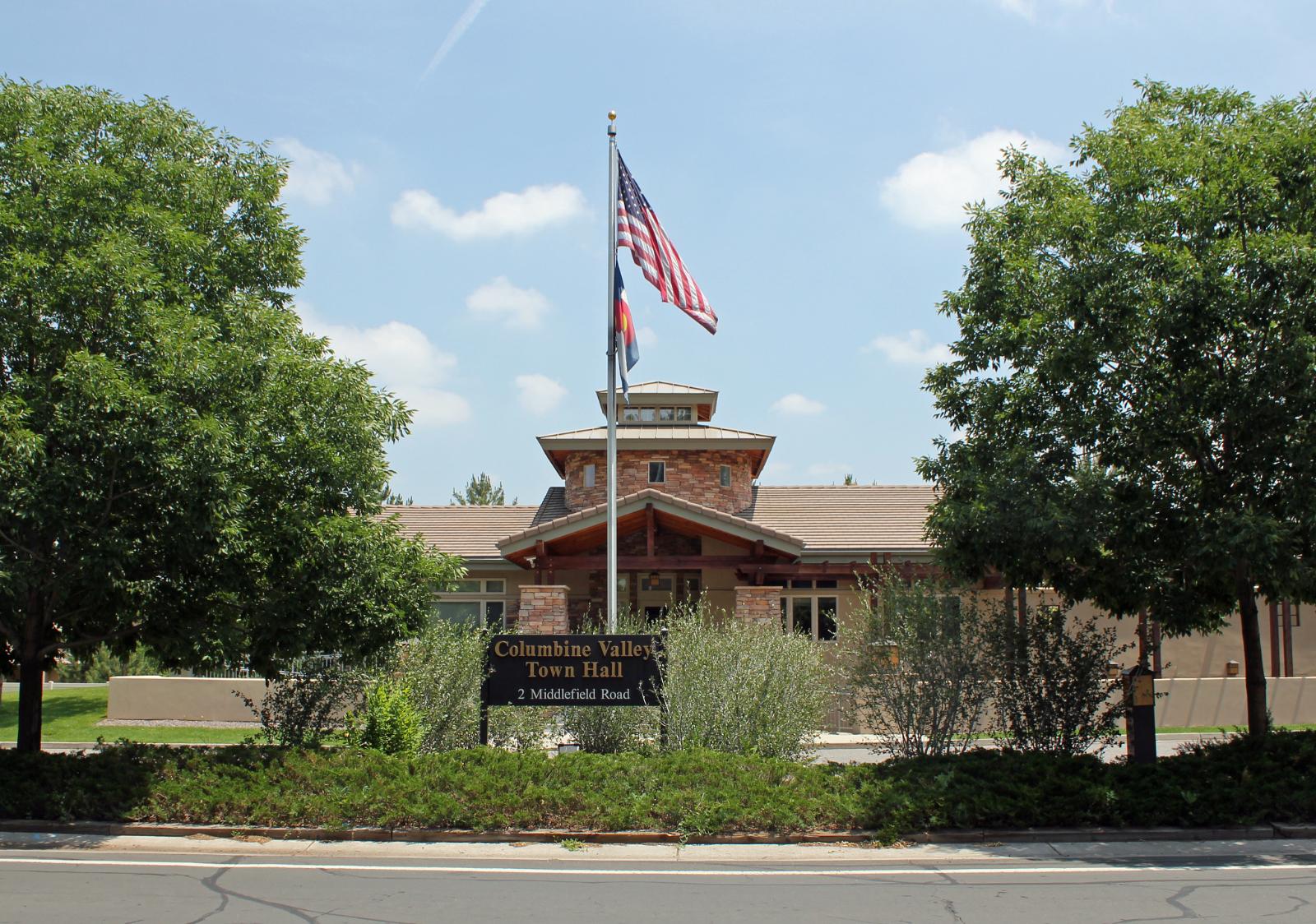
Why are people willing to pay so much to live here? What’s special about it?
Columbine Valley offers ultra-exclusive residential living with large estates, complete privacy, and proximity to Denver’s business centers. The community features sprawling custom homes on multi-acre lots with extensive landscaping and luxury amenities. Residents enjoy exceptional security, privacy, and prestige while maintaining convenient access to urban employment and cultural opportunities.
The area attracts ultra-wealthy individuals who prioritize privacy, exclusivity, and luxury living over recreational amenities. Many properties feature custom architecture, professional landscaping, and extensive grounds suitable for entertaining and privacy. Columbine Valley’s restricted access and limited housing supply ensure exceptional exclusivity and property value preservation.
How Columbine Valley Rose to Prominence
Columbine Valley was developed in the 1950s as an exclusive residential enclave for Denver’s business elite, designed around large lots and custom homes with extensive privacy. The community was planned to provide ultra-luxury suburban living with country club amenities and restricted access. Early residents included prominent business leaders and professionals who wanted privacy and prestige near Denver.
The area’s development emphasized exclusivity through large minimum lot sizes, architectural controls, and limited access that preserved the community’s elite character. Columbine Valley became synonymous with Denver’s old money establishment and continues to attract affluent residents seeking the ultimate in suburban luxury and privacy. The community has maintained its exclusive character through careful growth management and restrictive covenants.
3 Interesting Tidbits
1. Ultimate Privacy – The community features private roads and restricted access, ensuring exceptional privacy and security for residents.
2. Large Estates – Properties typically feature multiple acres with extensive landscaping, providing urban estate living within the Denver metropolitan area.
3. Elite Heritage – Columbine Valley has been home to numerous prominent Colorado business leaders, politicians, and professionals since its founding.
7. Edwards – 178% Home Price Increase Since 2010

- 2010: $605,710
- 2011: $516,846
- 2012: $527,945
- 2013: $554,643
- 2014: $592,795
- 2015: $627,220
- 2016: $670,931
- 2017: $710,089
- 2018: $738,335
- 2019: $763,231
- 2020: $741,999
- 2021: $1,096,257
- 2022: $1,432,668
- 2023: $1,473,423
- 2024: $1,648,206
- 2025: $1,681,776
Edwards has demonstrated exceptional growth with a 178% increase since 2010, reaching $1,681,776 in 2025. This Eagle County community experienced steady but modest growth through most of the 2010s before exploding during the pandemic years when prices more than doubled. Current values continue climbing, reflecting Edwards’ emergence as a luxury alternative to Vail with modern amenities and mountain access.
Why Edwards?

Why are people willing to pay so much to live here? What’s special about it?
Edwards provides luxury mountain living with modern amenities and convenient access to world-class skiing at Vail and Beaver Creek. The community features upscale developments, golf courses, and contemporary architecture while maintaining mountain character. Residents enjoy resort-quality amenities with more space and privacy than traditional resort towns offer.
The area attracts affluent families and professionals who want luxury mountain living with modern conveniences and recreational access. Many properties feature contemporary design, mountain views, and proximity to recreational facilities including the Arrowhead Golf Course. Edwards’ planned development and luxury focus appeal to buyers seeking sophisticated mountain lifestyle options.
How Edwards Rose to Prominence
Edwards began developing in the 1970s as a planned community designed to complement the growing Vail Valley resort economy. The area was conceived as a luxury residential and recreational development featuring golf courses, upscale housing, and modern amenities. Early development focused on attracting affluent buyers seeking alternatives to Vail’s more crowded village atmosphere.
The community’s growth accelerated through the 1980s and 1990s as it established the Arrowhead development and attracted luxury housing projects. Edwards’ combination of mountain setting, recreational amenities, and modern planning made it attractive to wealthy buyers seeking contemporary mountain living. The area has continued evolving as a luxury destination that balances mountain character with sophisticated amenities and services.
3 Interesting Tidbits
1. Planned Luxury – Edwards was specifically designed as a luxury mountain community with golf courses and upscale amenities as central features.
2. Golf Destination – The Arrowhead Golf Course, designed by Robert Trent Jones Jr., provides world-class golf with spectacular mountain views.
3. Strategic Location – Edwards sits centrally between Vail and Aspen, providing access to multiple world-class ski resorts and recreational opportunities.
6. Telluride – 278% Home Price Increase Since 2010

- 2010: $524,438
- 2011: $505,361
- 2012: $517,546
- 2013: $511,120
- 2014: $645,107
- 2015: $787,200
- 2016: $802,361
- 2017: $848,846
- 2018: $919,954
- 2019: $995,261
- 2020: $1,073,614
- 2021: $1,410,462
- 2022: $2,110,879
- 2023: $1,855,395
- 2024: $1,890,495
- 2025: $1,980,922
Telluride has achieved extraordinary growth with a 278% increase since 2010, nearly quadrupling to reach $1,980,922 in 2025. This iconic mountain resort experienced dramatic acceleration starting in 2014, with explosive growth during the pandemic years when prices peaked over $2.1 million. Current values remain near historic highs, reflecting Telluride’s position as one of Colorado’s most exclusive and spectacular mountain destinations.
Why Telluride?

Why are people willing to pay so much to live here? What’s special about it?
Telluride offers unparalleled mountain beauty in a dramatic box canyon setting with world-class skiing and preserved Victorian mining town character. The resort provides exceptional skiing terrain, luxury amenities, and year-round festivals while maintaining authentic Western atmosphere. Residents enjoy spectacular scenery, outdoor recreation, and one of Colorado’s most exclusive and pristine mountain environments.
The area attracts ultra-wealthy individuals who value natural beauty, exclusivity, and recreational diversity over convenience or accessibility. Many properties feature historic mining era architecture, modern luxury amenities, and immediate access to wilderness recreation. Telluride’s remote location and limited development create exceptional exclusivity and appreciation potential for discerning buyers.
How Telluride Rose to Prominence
Telluride was founded in 1878 as a silver mining camp in a spectacular box canyon surrounded by 13,000-foot peaks. The town thrived during the mining boom, developing substantial Victorian architecture and supporting thousands of residents. After mining declined in the early 1900s, Telluride became nearly abandoned, preserving its historic buildings through decades of minimal activity.
The modern revival began in 1972 when the ski area opened, taking advantage of the area’s exceptional terrain and snow conditions. Telluride’s development emphasized preservation of its mining heritage while creating a world-class destination. The town’s remote location and dramatic setting attracted celebrities and ultra-wealthy buyers seeking privacy and natural beauty, establishing Telluride as one of America’s most exclusive resort destinations.
3 Interesting Tidbits
1. Box Canyon Setting – Telluride sits in a spectacular box canyon with no through roads, creating natural isolation and preserving the area’s pristine character.
2. Mining Legacy – The town’s Victorian downtown is a National Historic Landmark, preserving one of Colorado’s most authentic and complete mining-era districts.
3. Festival Destination – Telluride hosts world-renowned festivals including bluegrass, film, and jazz events that attract international visitors and maintain year-round appeal.
5. Mountain Village – 155% Home Price Increase Since 2010

- 2010: $780,638
- 2011: $661,819
- 2012: $615,054
- 2013: $599,258
- 2014: $707,136
- 2015: $812,854
- 2016: $830,907
- 2017: $859,151
- 2018: $912,561
- 2019: $1,013,429
- 2020: $1,077,410
- 2021: $1,419,281
- 2022: $1,987,409
- 2023: $1,838,173
- 2024: $1,968,981
- 2025: $1,994,246
Mountain Village has achieved strong appreciation with a 155% increase since 2010, reaching $1,994,246 in 2025. This purpose-built ski resort community experienced steady growth through the 2010s before surging during the pandemic years when prices nearly doubled. Current values approach $2 million, reflecting Mountain Village’s position as Telluride’s luxury ski-in/ski-out complement with modern amenities and spectacular alpine setting.
Why Mountain Village?

Why are people willing to pay so much to live here? What’s special about it?
Mountain Village provides modern luxury ski resort living with direct slope access and spectacular mountain views in a purpose-built alpine setting. The community features contemporary architecture, ski-in/ski-out access, and resort amenities while maintaining connection to Telluride’s character. Residents enjoy world-class skiing, luxury services, and one of Colorado’s most dramatic mountain settings.
The area attracts affluent skiers and mountain enthusiasts who want modern luxury combined with exceptional recreational access and natural beauty. Many properties feature contemporary design, slope access, and panoramic alpine views. Mountain Village’s combination of modern amenities and spectacular setting appeals to buyers seeking turnkey luxury mountain living.
How Mountain Village Rose to Prominence
Mountain Village was developed in the 1980s and 1990s as a planned resort community designed to complement historic Telluride with modern ski-in/ski-out accommodations. The development was conceived to provide luxury mountain living with contemporary amenities while preserving Telluride’s historic character. Early planning emphasized architectural harmony with the alpine environment and direct ski access.
The community’s growth has focused on luxury residential development and resort amenities that attract affluent buyers seeking modern mountain living. Mountain Village’s design around ski access and alpine views has made it attractive to wealthy recreationalists and vacation home buyers. The area has developed as a complement to Telluride, offering modern luxury while maintaining connection to the region’s natural beauty and recreational opportunities.
3 Interesting Tidbits
1. Planned Resort – Mountain Village was specifically designed as a modern counterpart to historic Telluride, providing contemporary luxury with ski-in/ski-out access.
2. Gondola Connection – A free gondola system connects Mountain Village to historic Telluride, providing easy access between the modern and historic areas.
3. Alpine Architecture – Buildings are designed to harmonize with the alpine environment, featuring contemporary interpretations of mountain architecture with extensive use of stone and timber.
4. Snowmass Village – 154% Home Price Increase Since 2010

- 2010: $838,315
- 2011: $826,989
- 2012: $830,312
- 2013: $867,254
- 2014: $897,675
- 2015: $930,928
- 2016: $952,625
- 2017: $965,646
- 2018: $994,536
- 2019: $1,012,063
- 2020: $1,020,869
- 2021: $1,293,895
- 2022: $1,787,985
- 2023: $1,829,608
- 2024: $2,054,813
- 2025: $2,131,627
Snowmass Village has demonstrated impressive growth with a 154% increase since 2010, reaching $2,131,627 in 2025. This Aspen-area resort community experienced steady appreciation through the 2010s before accelerating dramatically during the pandemic years. Current values exceed $2.1 million, reflecting Snowmass Village’s evolution into a luxury destination that rivals Aspen with modern amenities and exceptional skiing.
Why Snowmass Village?

Why are people willing to pay so much to live here? What’s special about it?
Snowmass Village offers modern luxury resort living with Aspen’s cultural amenities and some of Colorado’s best skiing terrain. The community features contemporary developments, ski-in/ski-out access, and extensive recreational facilities while maintaining connection to Aspen’s sophisticated atmosphere. Residents enjoy world-class skiing, luxury amenities, and proximity to Aspen’s dining, shopping, and cultural offerings.
The area attracts affluent families and recreational enthusiasts who want luxury mountain living with modern conveniences and exceptional skiing access. Many properties feature contemporary architecture, slope access, and resort-style services. Snowmass Village’s combination of skiing excellence, luxury amenities, and Aspen proximity creates exceptional appeal for discerning mountain property buyers.
How Snowmass Village Rose to Prominence
Snowmass Village was developed in the late 1960s as a planned resort community designed to expand Aspen’s capacity while providing modern ski-in/ski-out accommodations. The development was conceived around the new Snowmass ski area, which offered extensive terrain and modern lift systems. Early planning emphasized contemporary mountain architecture and direct slope access.
The community’s growth has focused on luxury residential and resort development that attracts affluent buyers seeking modern alternatives to Aspen’s historic properties. Recent developments have elevated Snowmass Village’s profile with ultra-luxury condominiums and resort amenities. The area has evolved from Aspen’s satellite community into a destination in its own right, offering modern luxury with exceptional recreational access.
3 Interesting Tidbits
1. Ski Area Scale – Snowmass features the largest ski area in the Aspen region, with over 3,300 acres of terrain and extensive intermediate and advanced skiing.
2. Modern Development – The Base Village represents one of Colorado’s most sophisticated ski resort developments, featuring luxury residences, hotels, and amenities.
3. Family Focus – Snowmass was designed as a family-friendly alternative to Aspen, with extensive beginner terrain, childcare facilities, and family-oriented amenities.
3. Bow Mar – 162% Home Price Increase Since 2010

- 2010: $843,663
- 2011: $815,798
- 2012: $832,209
- 2013: $899,725
- 2014: $978,520
- 2015: $1,069,500
- 2016: $1,134,271
- 2017: $1,169,925
- 2018: $1,260,322
- 2019: $1,305,930
- 2020: $1,383,150
- 2021: $1,808,514
- 2022: $2,190,393
- 2023: $2,152,002
- 2024: $2,196,854
- 2025: $2,213,540
Bow Mar has achieved exceptional appreciation with a 162% increase since 2010, reaching $2,213,540 in 2025. This exclusive Jefferson County enclave experienced consistent growth through the 2010s before accelerating during the pandemic years when prices jumped significantly. Current values exceed $2.2 million, reflecting Bow Mar’s position as one of Colorado’s most prestigious gated communities with waterfront amenities and Denver proximity.
Why Bow Mar?

Why are people willing to pay so much to live here? What’s special about it?
Bow Mar offers ultra-exclusive waterfront living in a gated community setting with private lake access and proximity to Denver’s business centers. The community features custom estates on large lots with lake frontage, private beaches, and country club amenities. Residents enjoy exceptional privacy, security, and recreational opportunities while maintaining convenient access to urban employment and cultural activities.
The area attracts ultra-wealthy individuals who prioritize exclusivity, waterfront amenities, and luxury living within commuting distance of Denver. Many properties feature custom architecture, extensive grounds, and direct lake access with private docks. Bow Mar’s combination of waterfront location, gated security, and prestige makes it highly sought after by Colorado’s business and professional elite.
How Bow Mar Rose to Prominence
Bow Mar was developed in the 1950s as an exclusive residential community around a private lake southwest of Denver. The development was planned to provide ultra-luxury suburban living with waterfront amenities and country club features for Denver’s business elite. Early residents included prominent business leaders and professionals who wanted prestige and privacy near the city.
The community’s development emphasized exclusivity through large lot sizes, architectural controls, and limited access that preserved its elite character. Bow Mar’s combination of waterfront location and proximity to Denver made it attractive to affluent residents throughout its growth. The area has maintained its exclusive status through careful management and restrictive covenants that preserve property values and community character.
3 Interesting Tidbits
1. Private Lake – Bow Mar features a 110-acre private lake with swimming, boating, and fishing exclusively for residents and their guests.
2. Gated Exclusivity – The community maintains strict access controls and security measures that ensure privacy and exclusivity for residents.
3. Country Club Amenities – Bow Mar includes golf course, tennis facilities, and clubhouse amenities that create a resort-like environment for residents.
2. Cherry Hills Village – 145% Home Price Increase Since 2010

- 2010: $1,244,723
- 2011: $1,153,074
- 2012: $1,172,788
- 2013: $1,296,617
- 2014: $1,382,027
- 2015: $1,471,744
- 2016: $1,583,873
- 2017: $1,578,342
- 2018: $1,661,377
- 2019: $1,774,473
- 2020: $1,842,333
- 2021: $2,336,376
- 2022: $2,912,908
- 2023: $2,825,651
- 2024: $2,961,720
- 2025: $3,049,694
Cherry Hills Village has achieved strong growth with a 145% increase since 2010, reaching $3,049,694 in 2025. This prestigious Arapahoe County community experienced steady appreciation through the 2010s before accelerating during the pandemic years when prices jumped dramatically. Current values exceed $3 million, reflecting Cherry Hills Village’s position as Colorado’s premier luxury suburban community with exceptional amenities and exclusivity.
Why Cherry Hills Village?
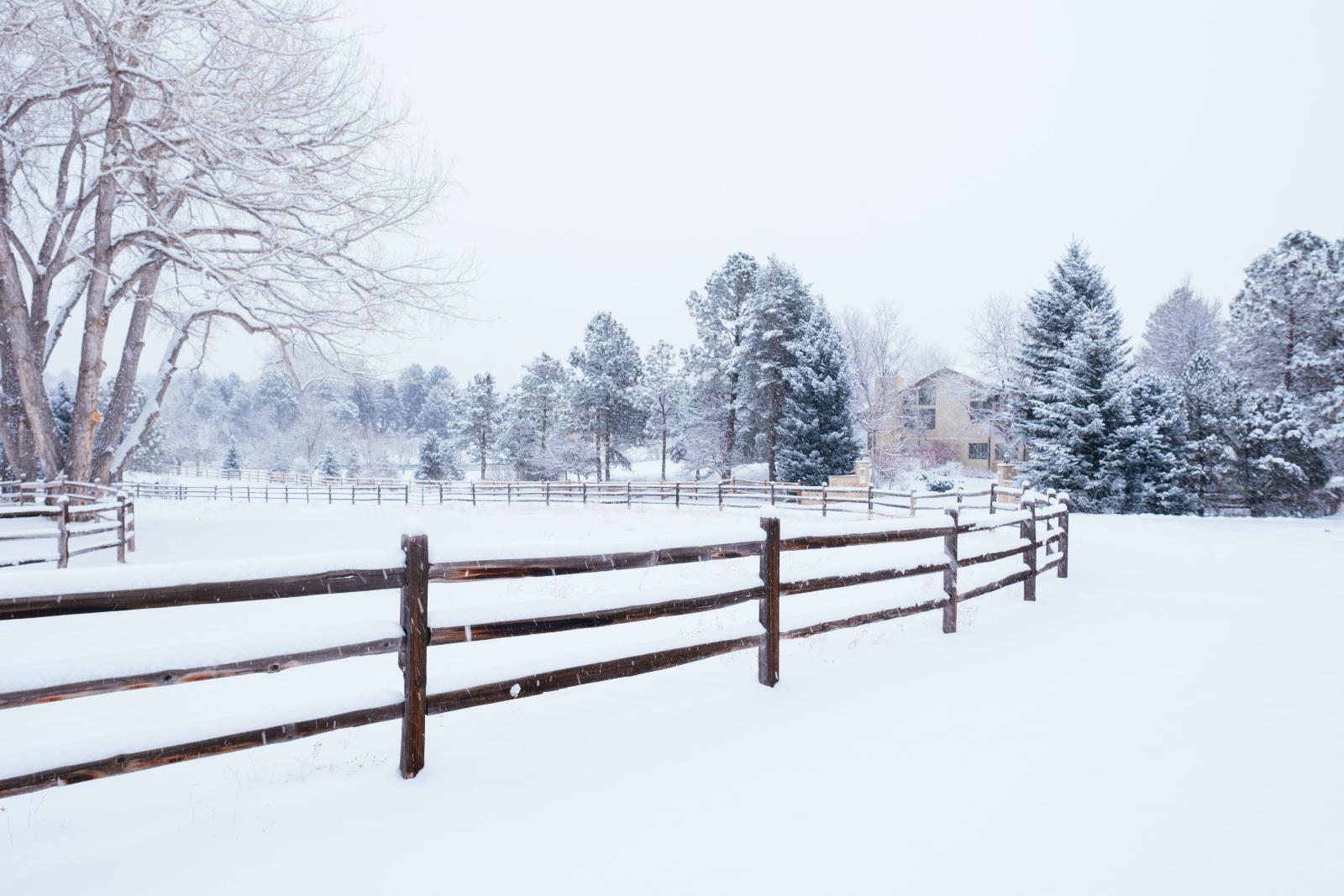
Why are people willing to pay so much to live here? What’s special about it?
Cherry Hills Village represents the pinnacle of Colorado luxury suburban living with expansive estates, world-class golf, and proximity to Denver’s business centers. The community features large custom homes on multi-acre lots with extensive landscaping and privacy. Residents enjoy access to the prestigious Cherry Hills Country Club, top-rated schools, and exceptional security while maintaining convenient access to urban amenities.
The area attracts Colorado’s business elite, professional athletes, and ultra-wealthy families who want the ultimate in suburban luxury and prestige. Many properties feature custom architecture, professional landscaping, and extensive recreational amenities on large private lots. Cherry Hills Village’s combination of exclusivity, amenities, and location makes it the most prestigious address in the Denver metropolitan area.
How Cherry Hills Village Rose to Prominence
Cherry Hills Village was incorporated in 1945 as an exclusive residential community built around the prestigious Cherry Hills Country Club, which was established in 1922. The area was developed to provide ultra-luxury suburban living for Denver’s business and social elite, featuring large estates and country club amenities. Early residents included prominent business leaders, politicians, and professionals who established the community’s elite character.
The community’s development has consistently emphasized exclusivity through large lot requirements, architectural controls, and careful growth management that preserves its prestigious character. Cherry Hills Village’s reputation has grown through decades of hosting major golf championships and attracting prominent residents. The area has maintained its position as Colorado’s most exclusive suburban community through restrictive zoning and community standards.
3 Interesting Tidbits
1. Golf Legacy – Cherry Hills Country Club has hosted three U.S. Opens and multiple major championships, establishing it as one of America’s premier golf destinations.
2. Celebrity Heritage – The community has been home to numerous professional athletes, business leaders, and celebrities, cementing its reputation as Colorado’s most prestigious address.
3. Exclusive Standards – The city maintains some of Colorado’s strictest zoning requirements, with minimum lot sizes and architectural standards that preserve the community’s elite character.
1. Aspen – 174% Home Price Increase Since 2010

- 2010: $1,230,065
- 2011: $1,219,674
- 2012: $1,226,867
- 2013: $1,366,850
- 2014: $1,462,871
- 2015: $1,622,277
- 2016: $1,711,586
- 2017: $1,742,177
- 2018: $1,829,241
- 2019: $1,947,685
- 2020: $2,013,161
- 2021: $2,698,763
- 2022: $3,447,757
- 2023: $3,141,306
- 2024: $3,321,829
- 2025: $3,368,851
Aspen claims the top position with a 174% increase since 2010, reaching an extraordinary $3,368,851 in 2025. This world-renowned resort town experienced steady growth through the 2010s before exploding during the pandemic years when prices peaked near $3.45 million. Current values remain near historic highs, reflecting Aspen’s unmatched position as America’s most prestigious mountain resort destination with global recognition and ultra-luxury amenities.
Why Aspen?
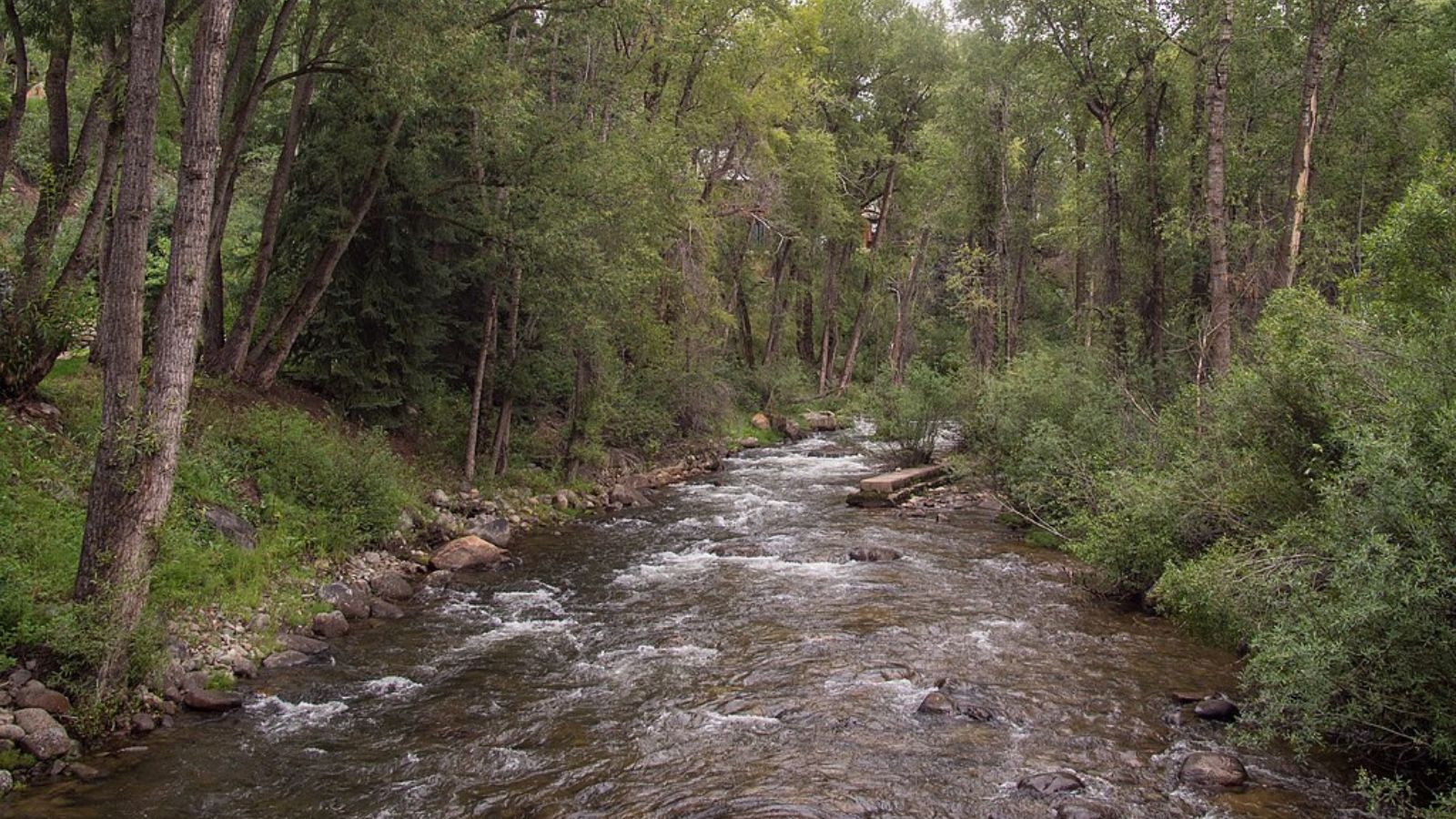
Why are people willing to pay so much to live here? What’s special about it?
Aspen represents the ultimate in American luxury mountain living with world-class skiing, cultural sophistication, and international prestige. The resort offers four different ski mountains, luxury shopping, fine dining, and year-round cultural events including music festivals and art exhibitions. Residents enjoy unparalleled amenities, natural beauty, and access to one of the world’s most exclusive mountain communities.
The area attracts billionaires, celebrities, and ultra-wealthy individuals from around the globe who value prestige, natural beauty, and cultural sophistication. Many properties feature historic mining-era architecture, modern luxury amenities, and prime locations within walking distance of world-class amenities. Aspen’s combination of exclusivity, beauty, and cultural richness creates the ultimate luxury mountain lifestyle.
How Aspen Rose to Prominence
Aspen was founded in 1879 as a silver mining camp and became one of the world’s richest mining towns, producing enormous wealth through the 1880s and 1890s. After the silver crash of 1893, Aspen nearly became a ghost town, preserving its Victorian architecture through decades of minimal activity. The modern transformation began in the 1940s when Chicago businessman Walter Paepcke envisioned creating a cultural and recreational destination.
Aspen’s development as a world-class resort accelerated through the 1950s and 1960s with the establishment of the Aspen Music Festival and expansion of skiing facilities. The town’s combination of cultural sophistication, natural beauty, and recreational excellence attracted international attention and wealthy visitors. Aspen has maintained its position as the world’s premier mountain resort through careful development that balances growth with preservation of its unique character and natural setting.
3 Interesting Tidbits
1. Cultural Capital – Aspen hosts world-renowned cultural events including the Aspen Music Festival, Aspen Ideas Festival, and numerous art and literary programs that attract global audiences.
2. Billionaire Haven – An estimated 100-125 billionaires own properties in Aspen, making it one of the world’s highest concentrations of ultra-wealthy residents.
3. Four Mountains – Aspen offers access to four different ski areas (Aspen Mountain, Aspen Highlands, Buttermilk, and Snowmass), providing the most diverse skiing terrain of any resort destination.

